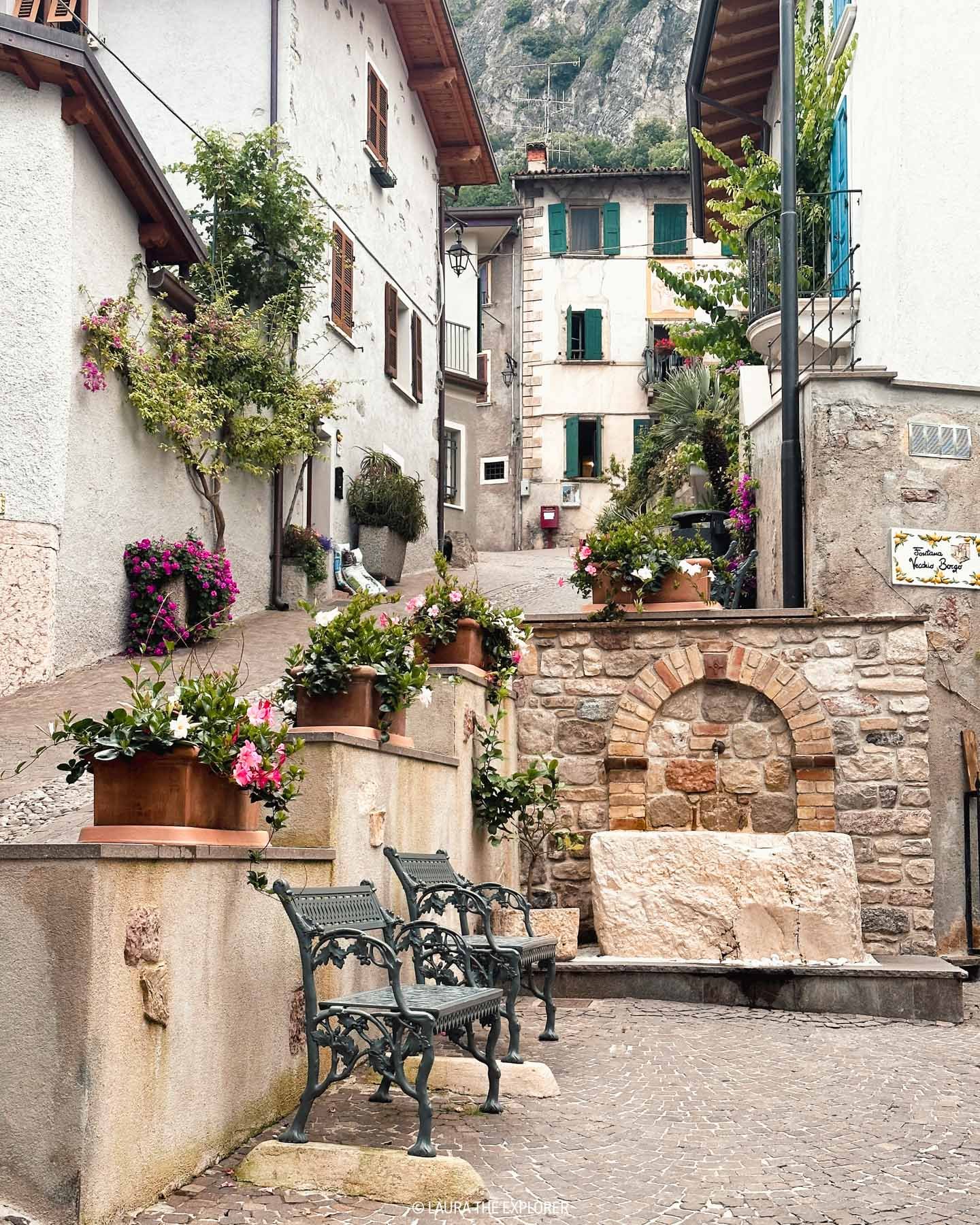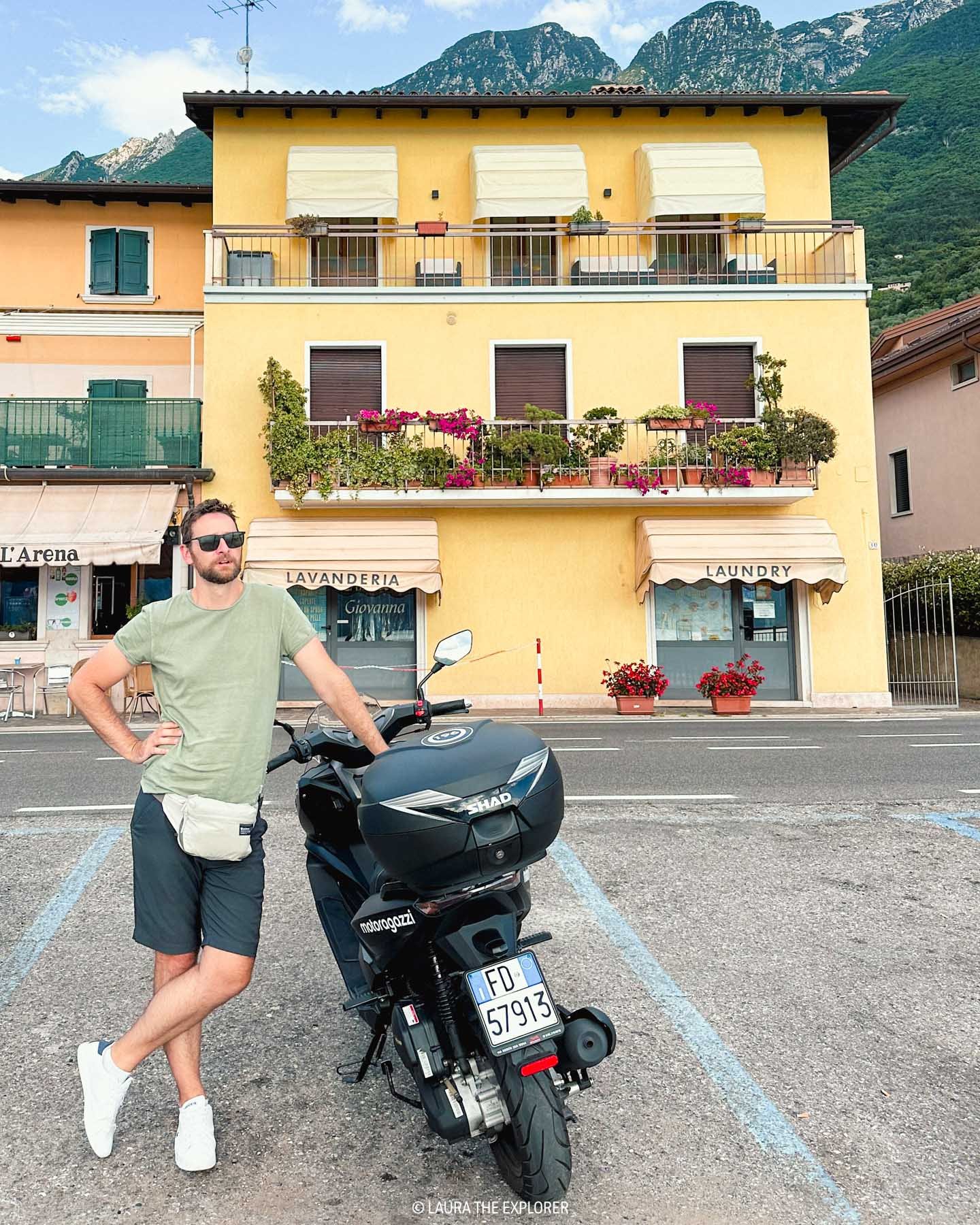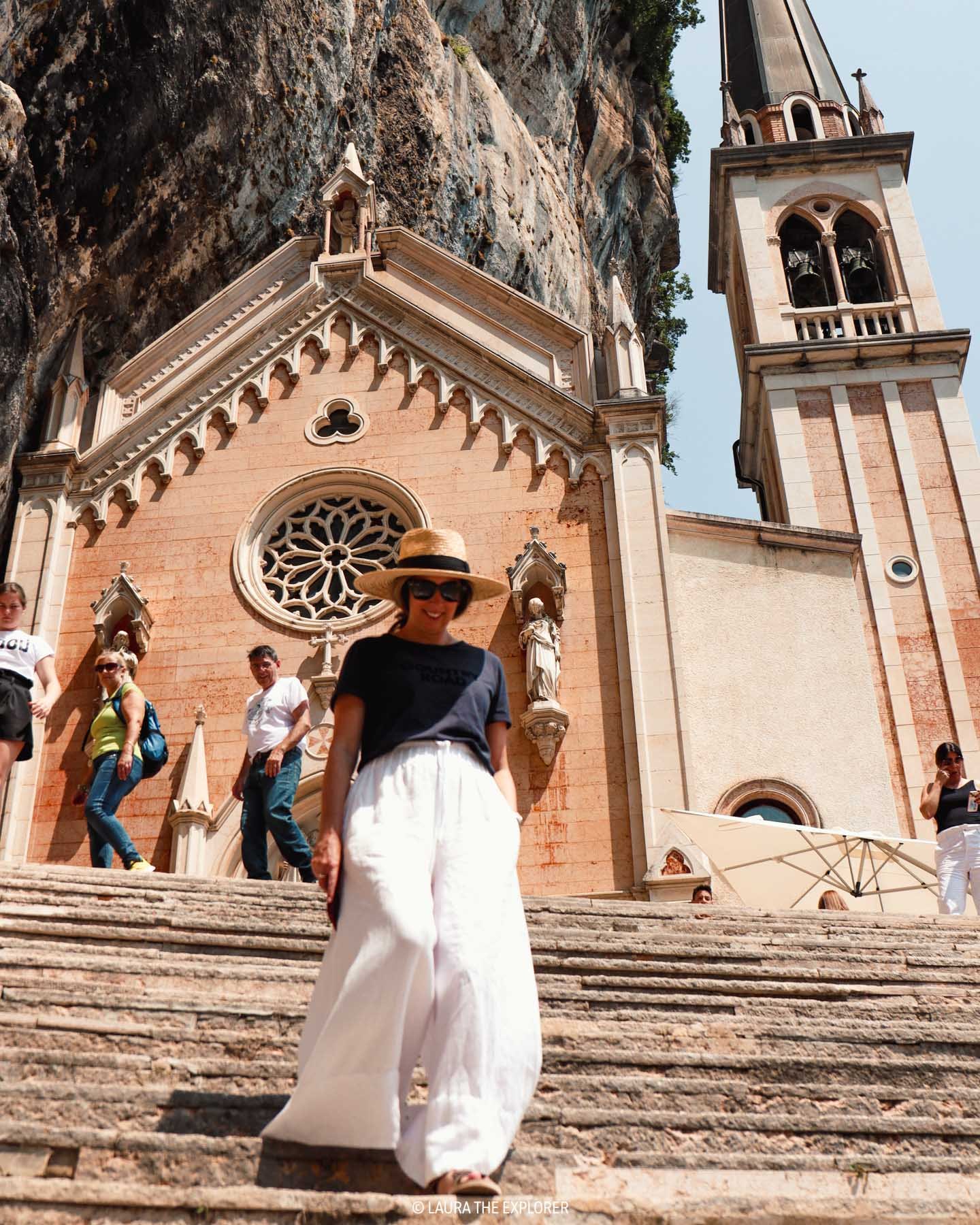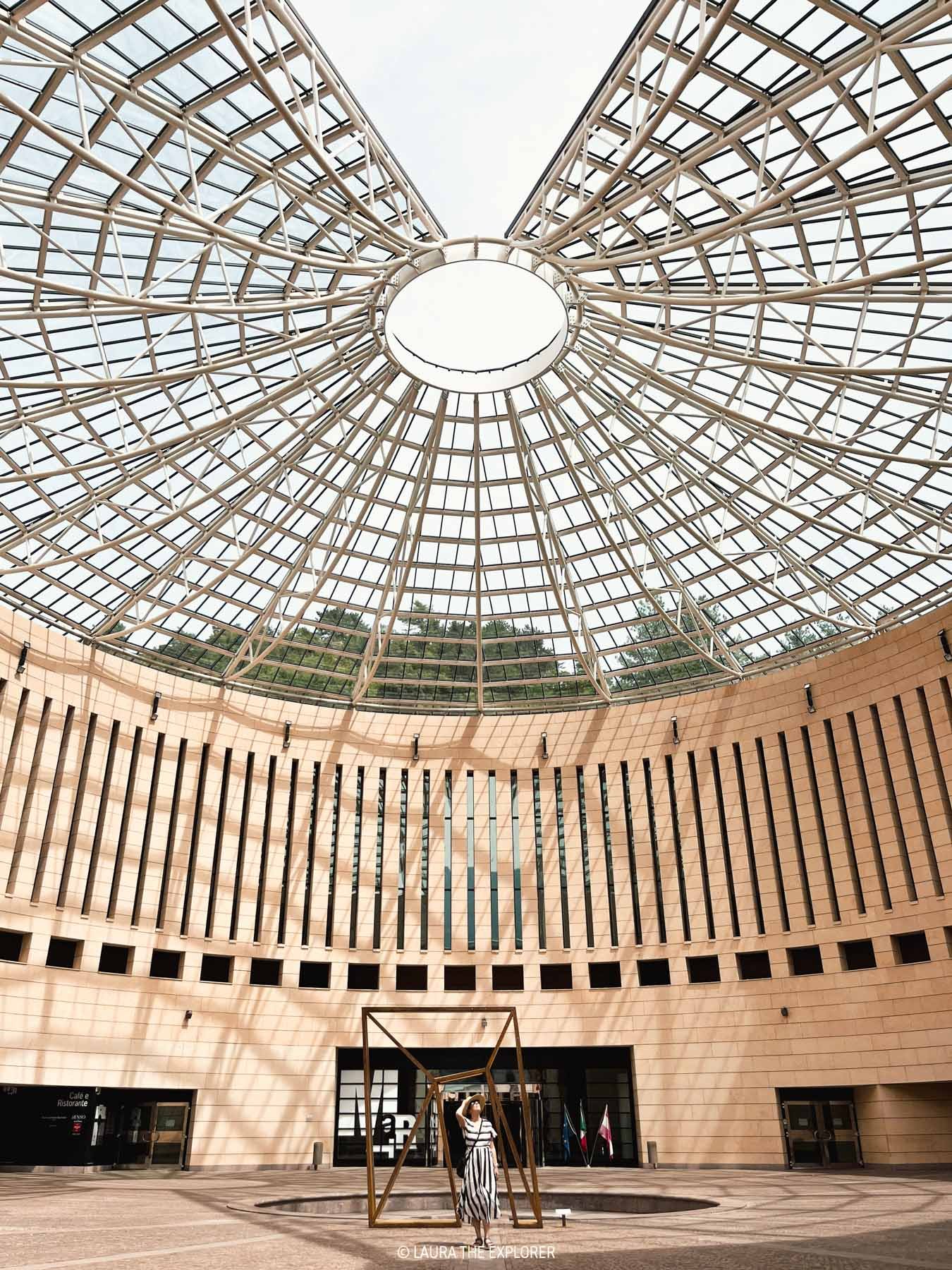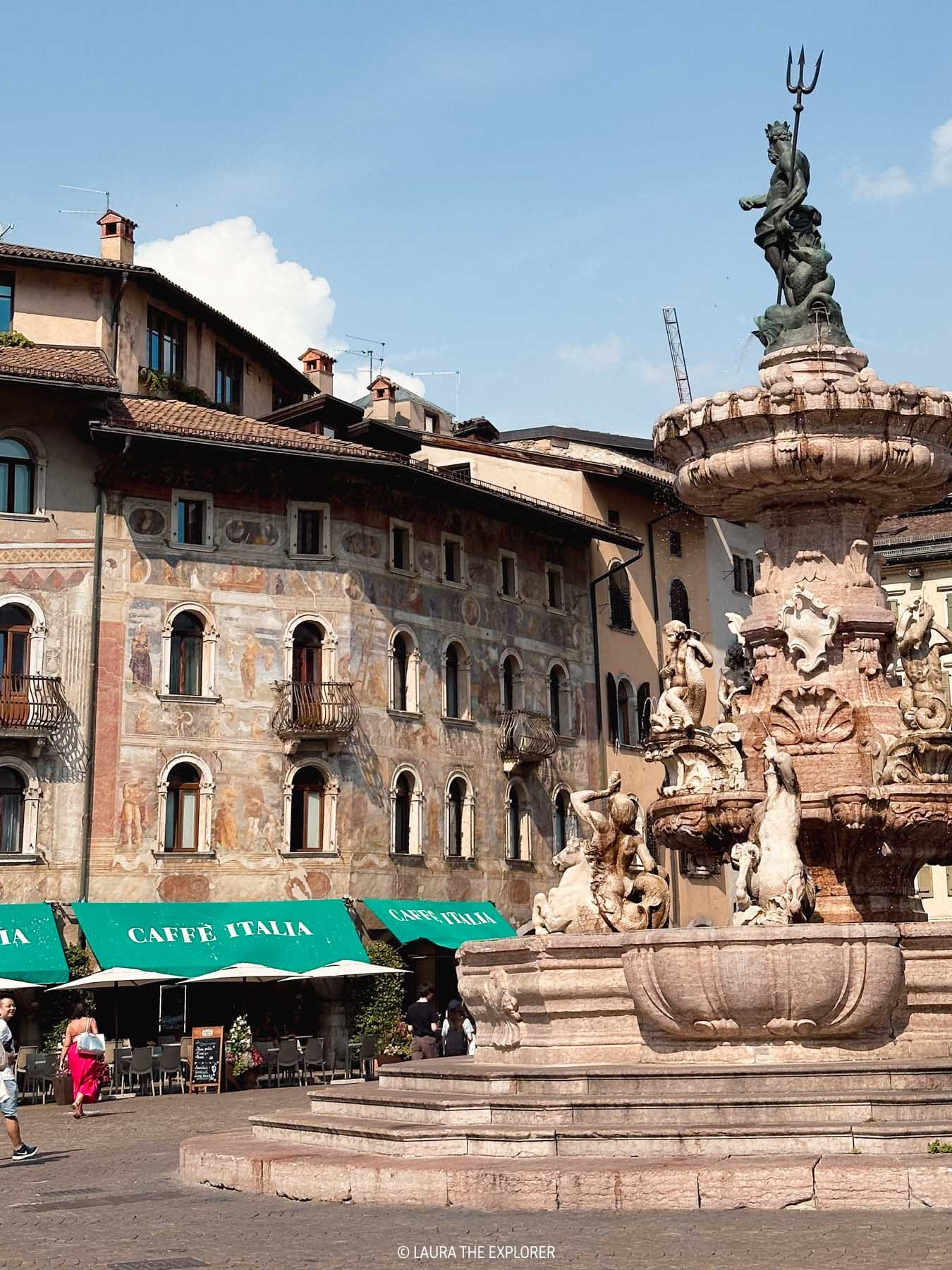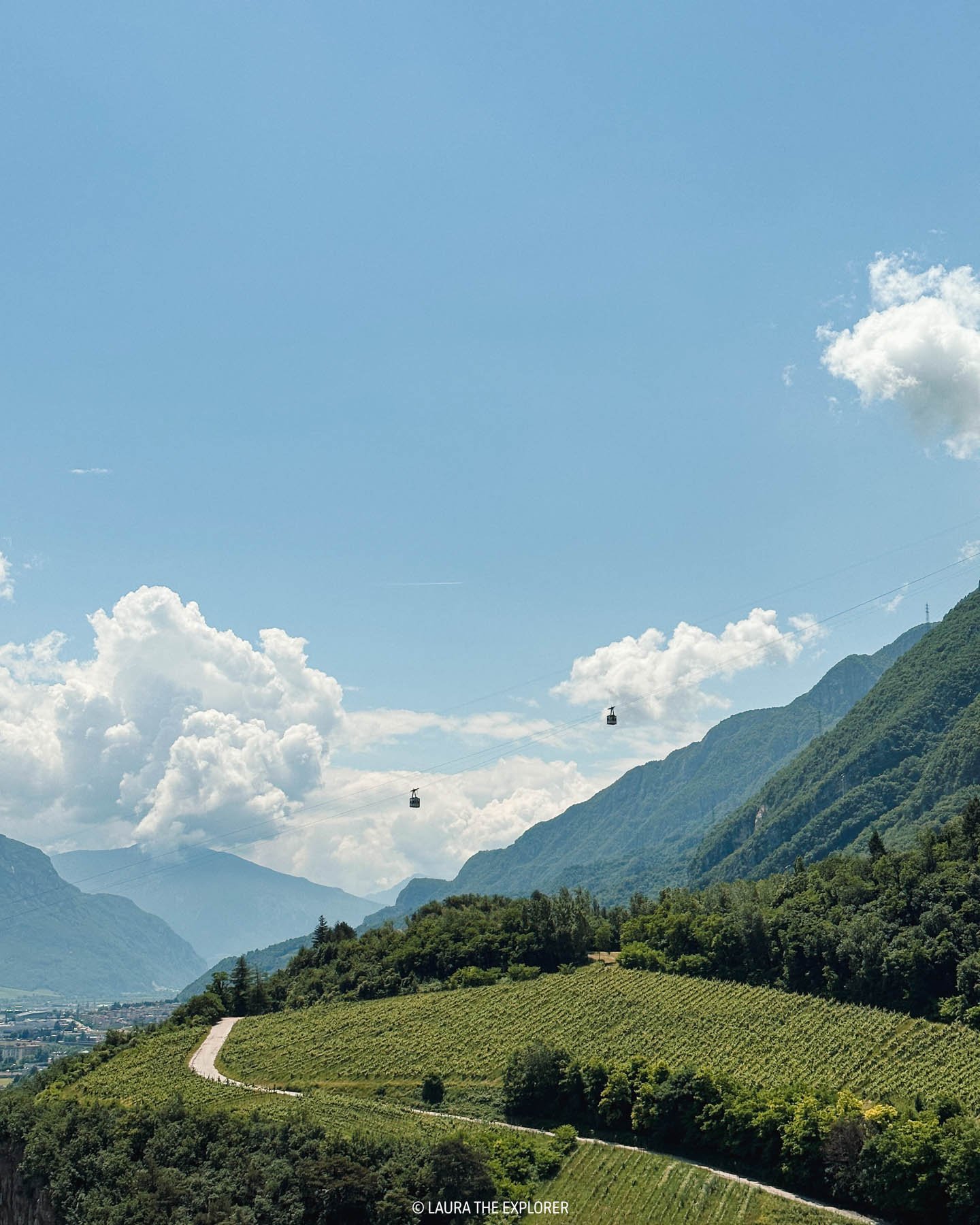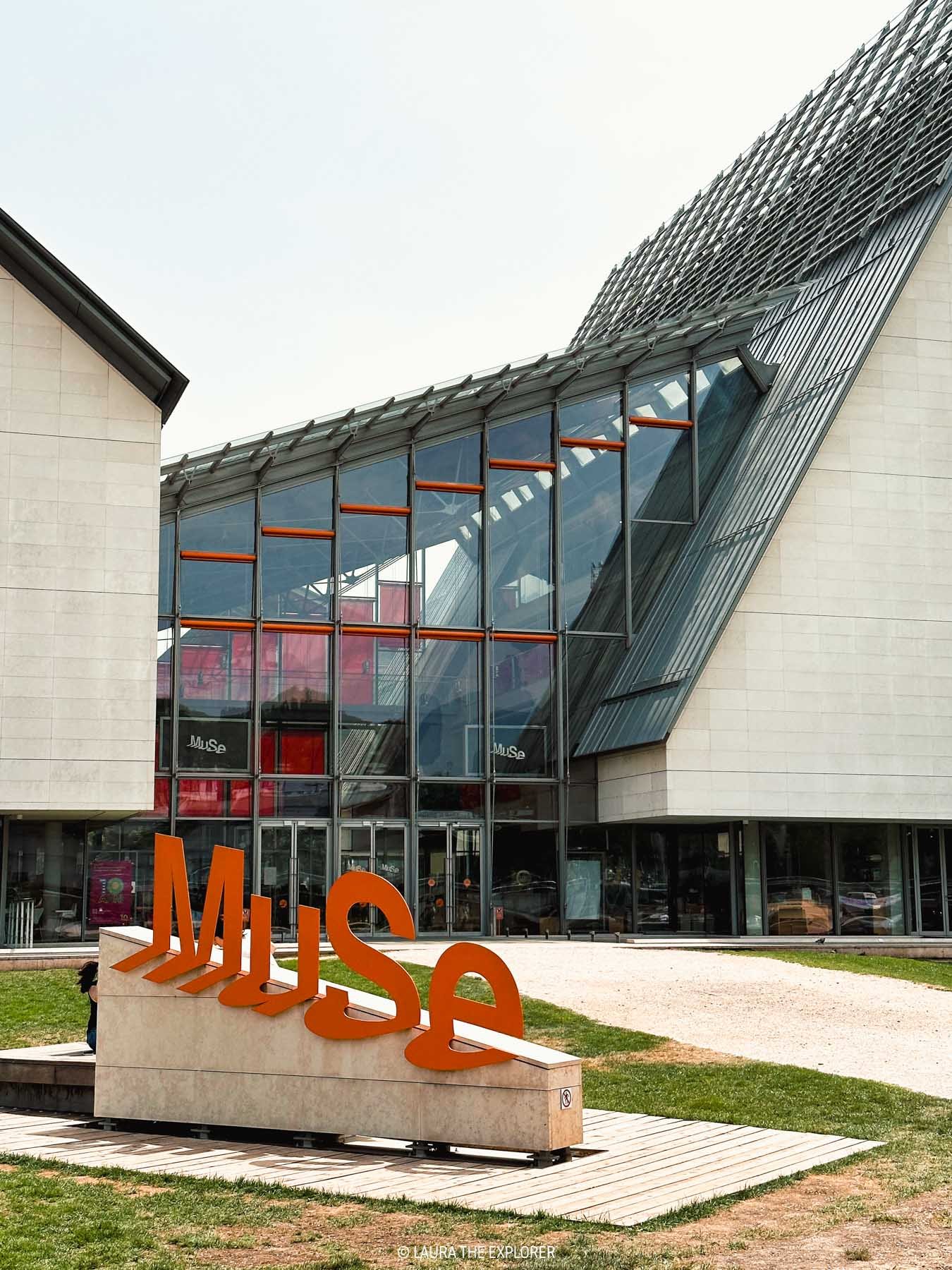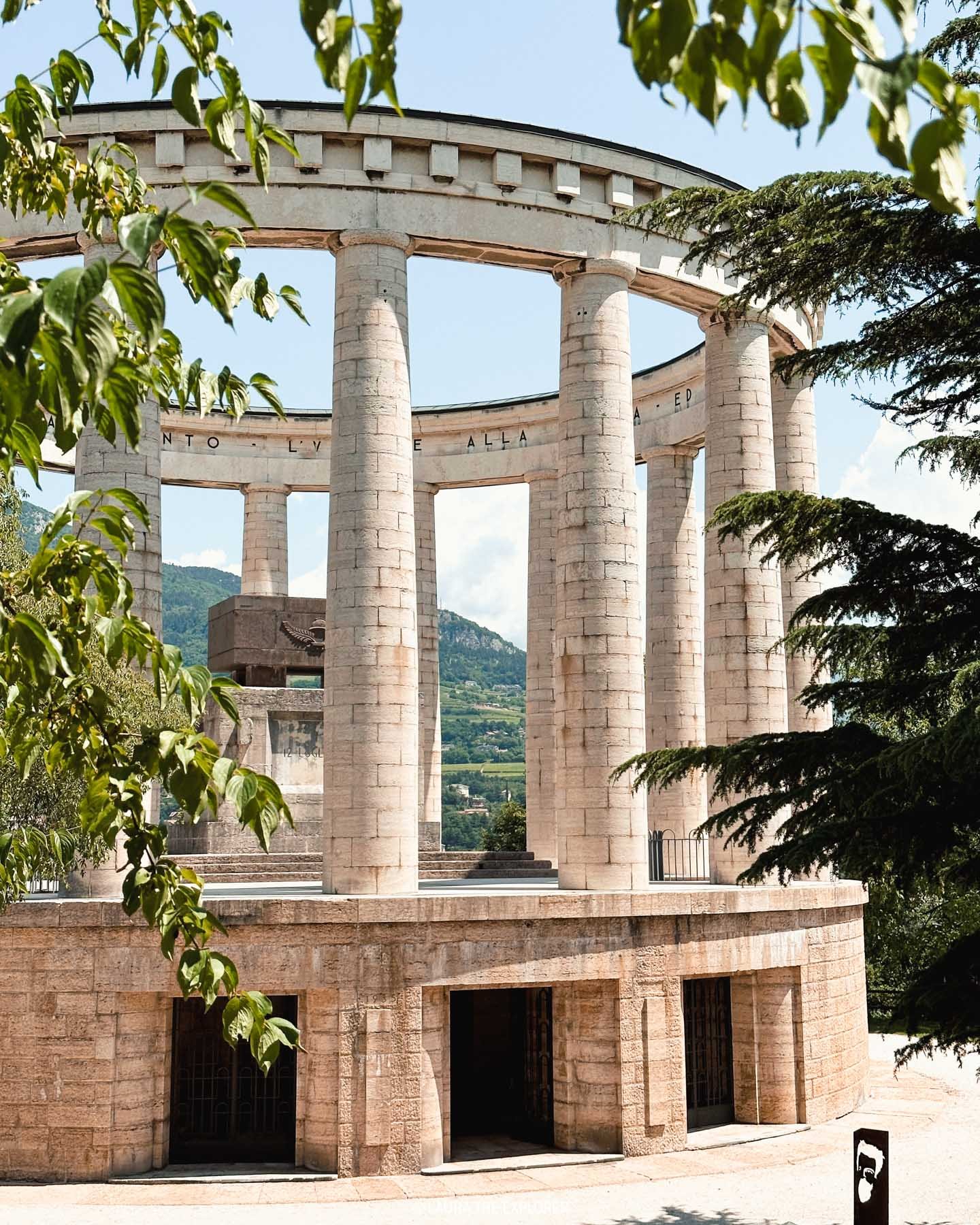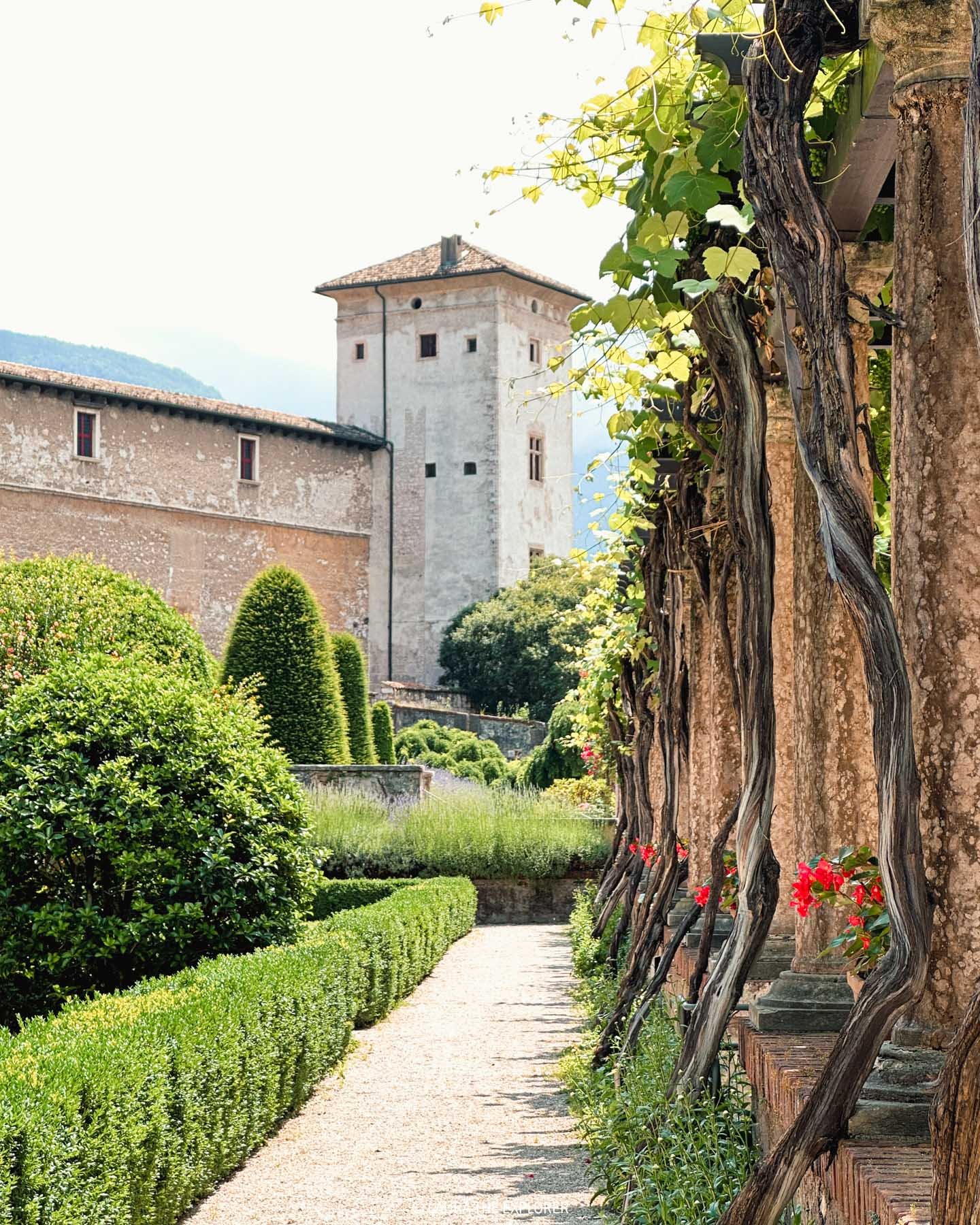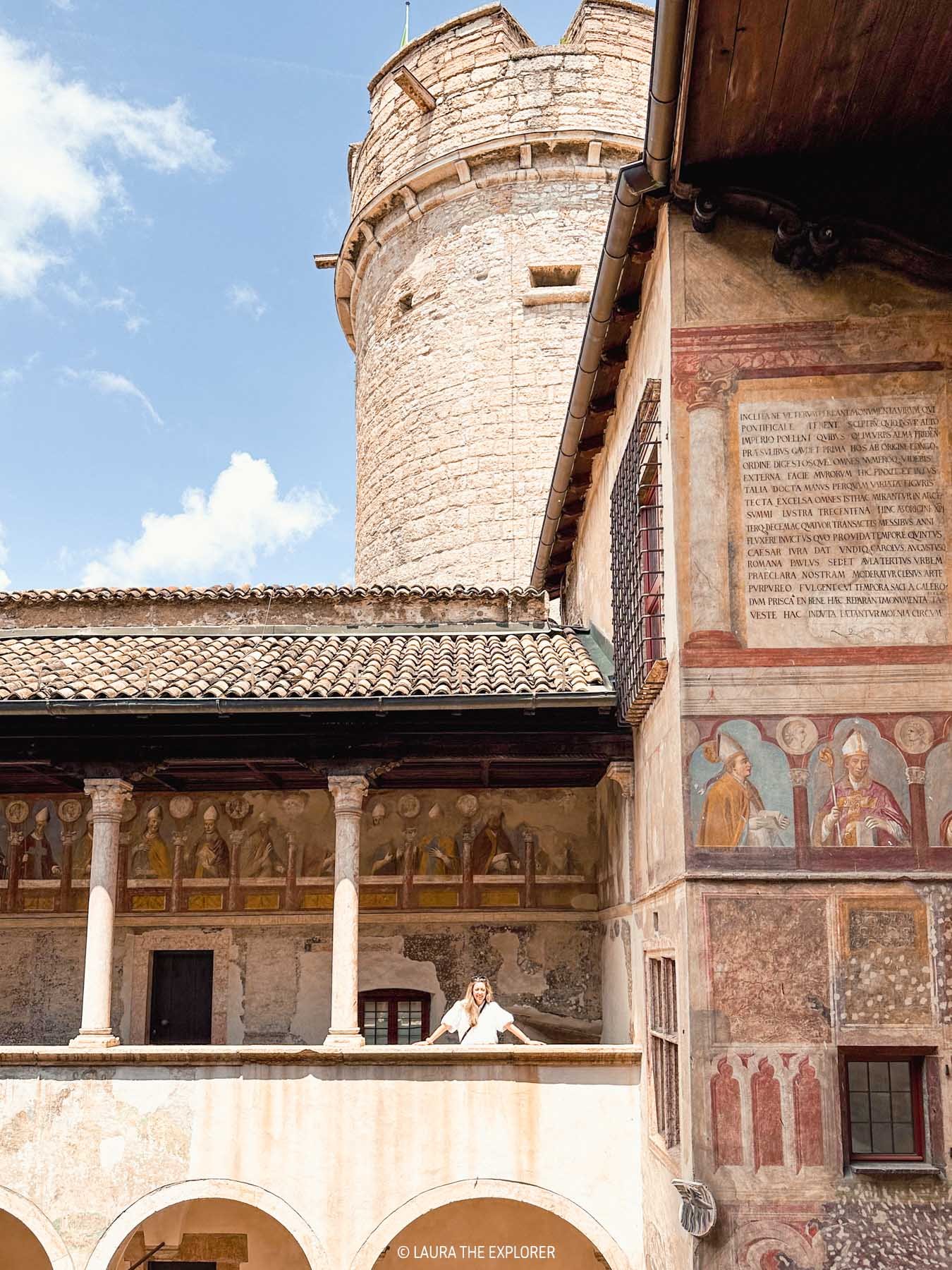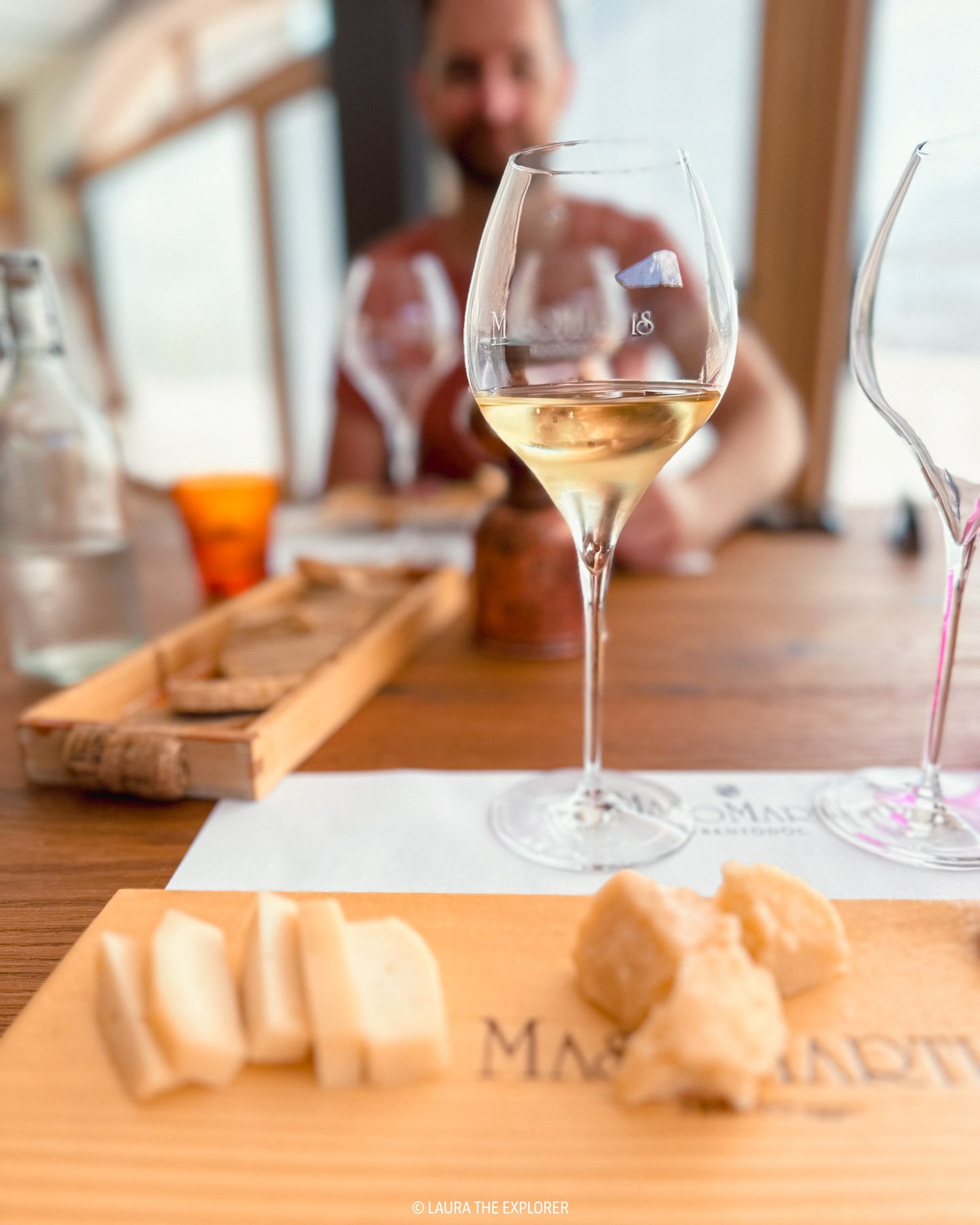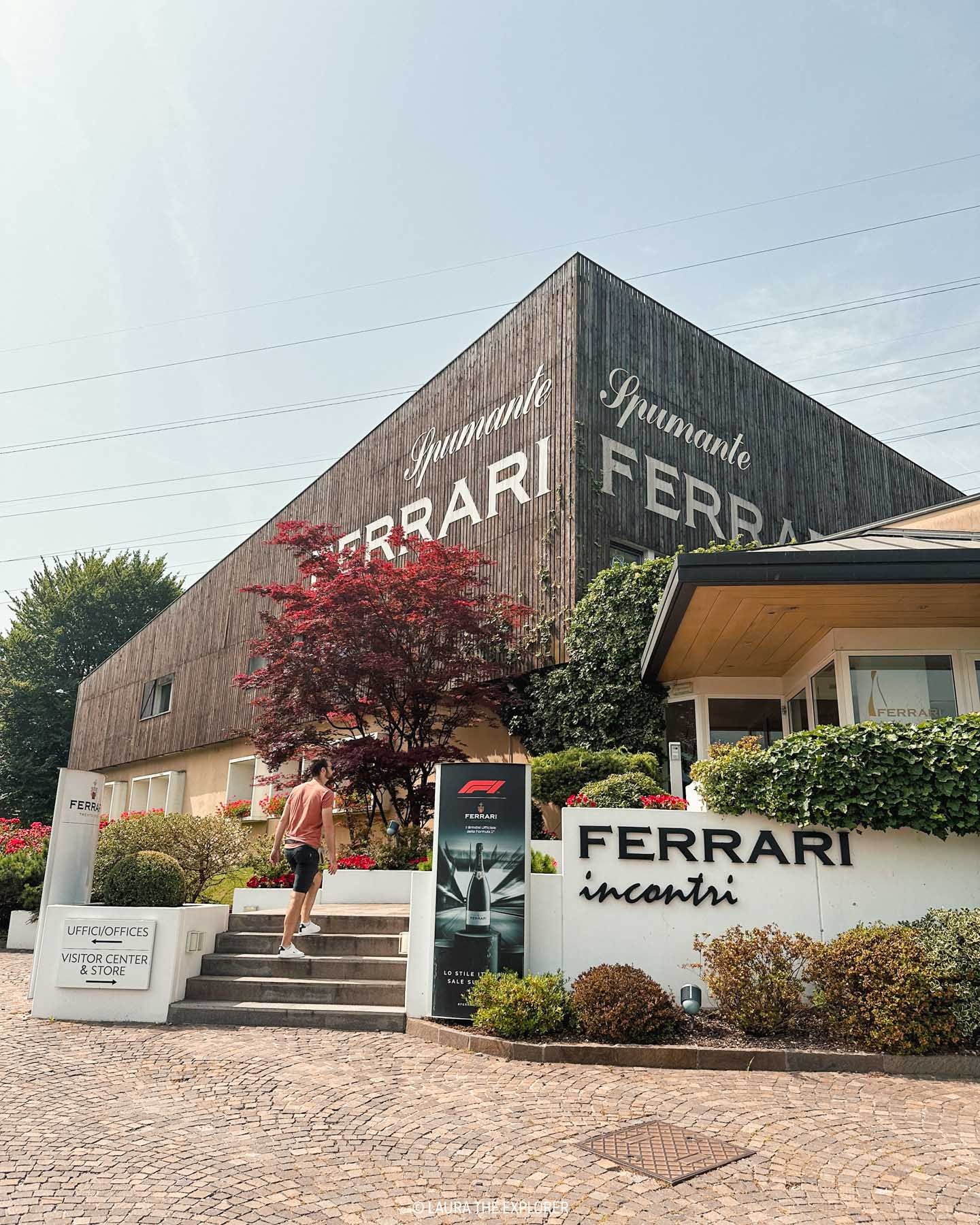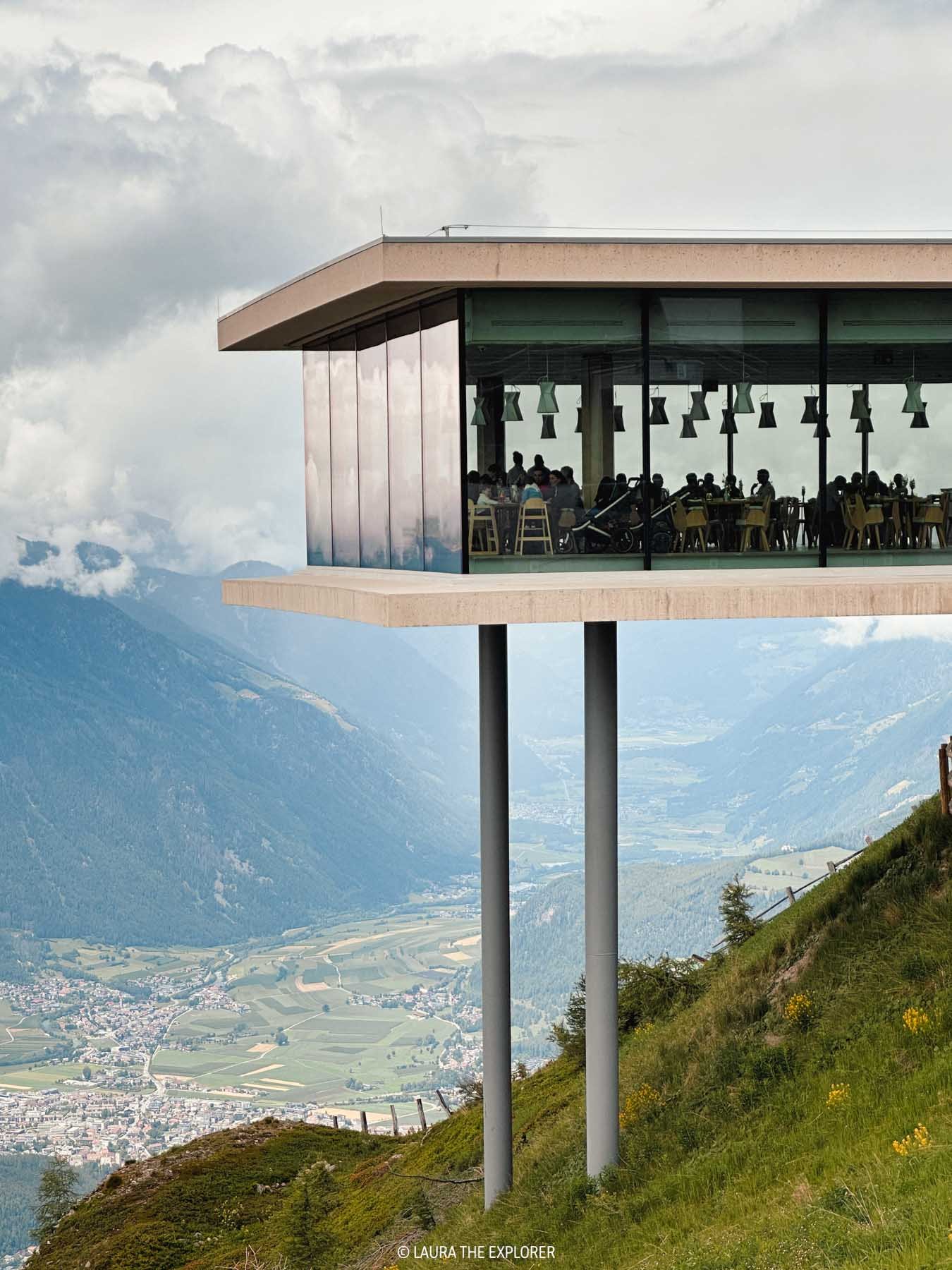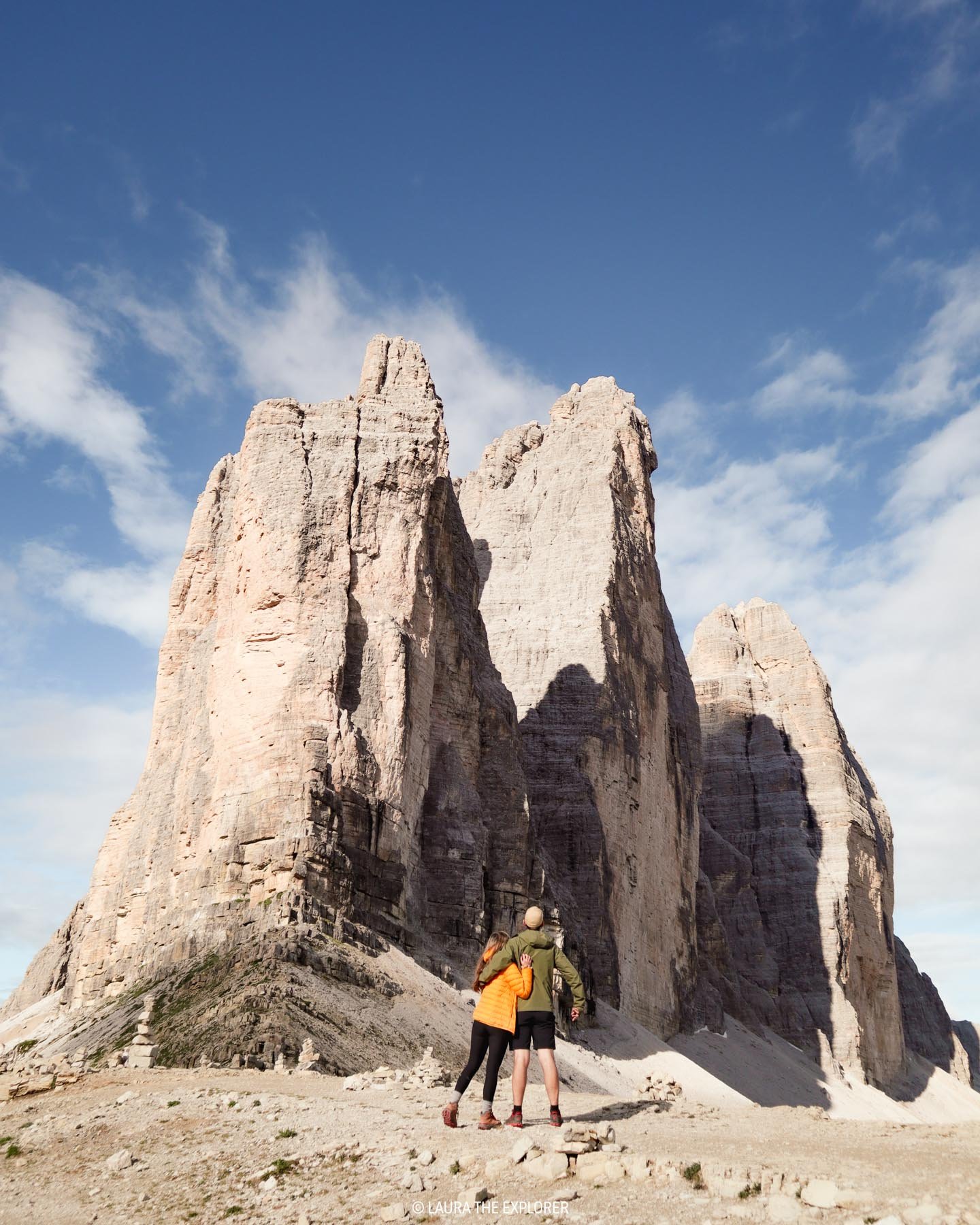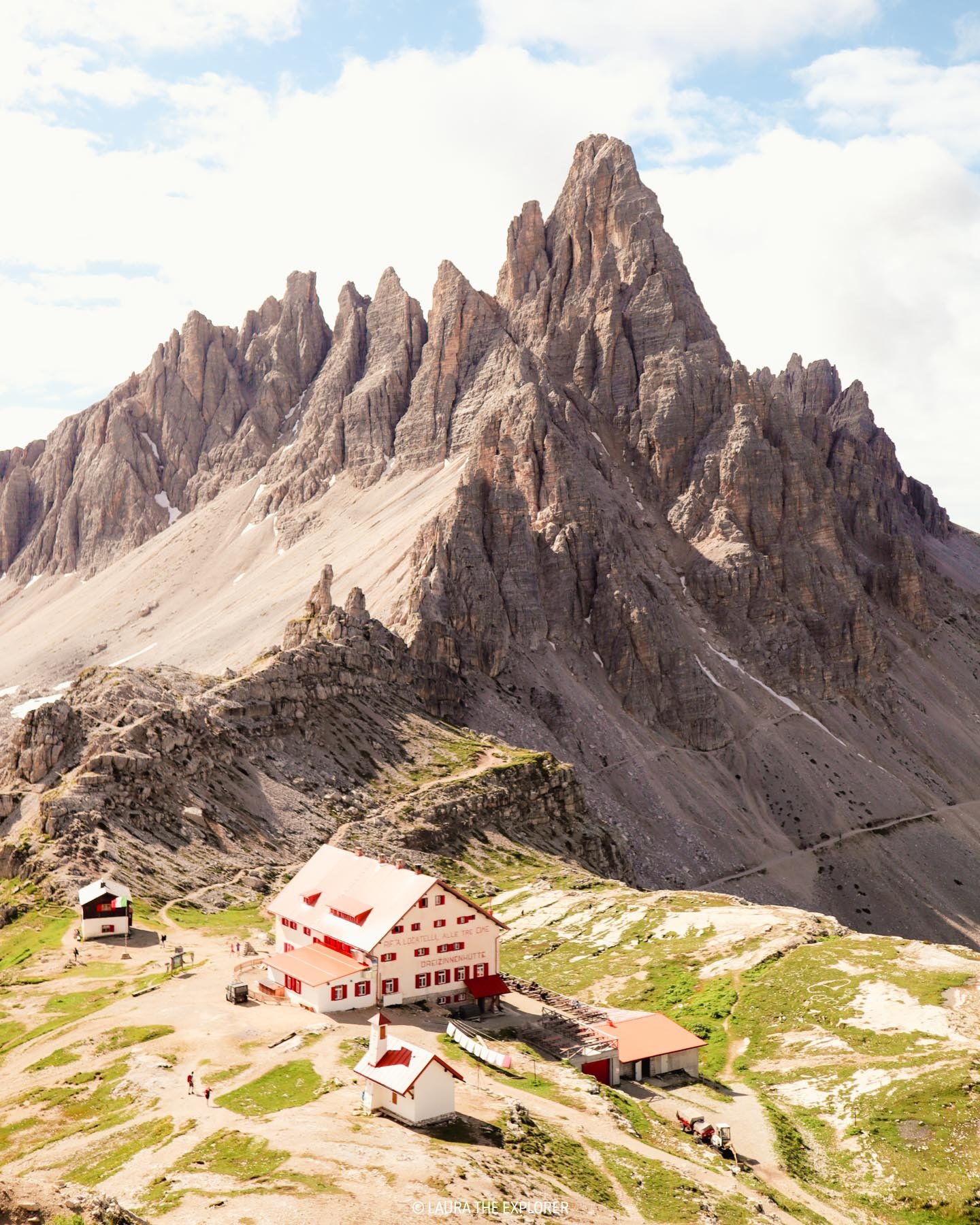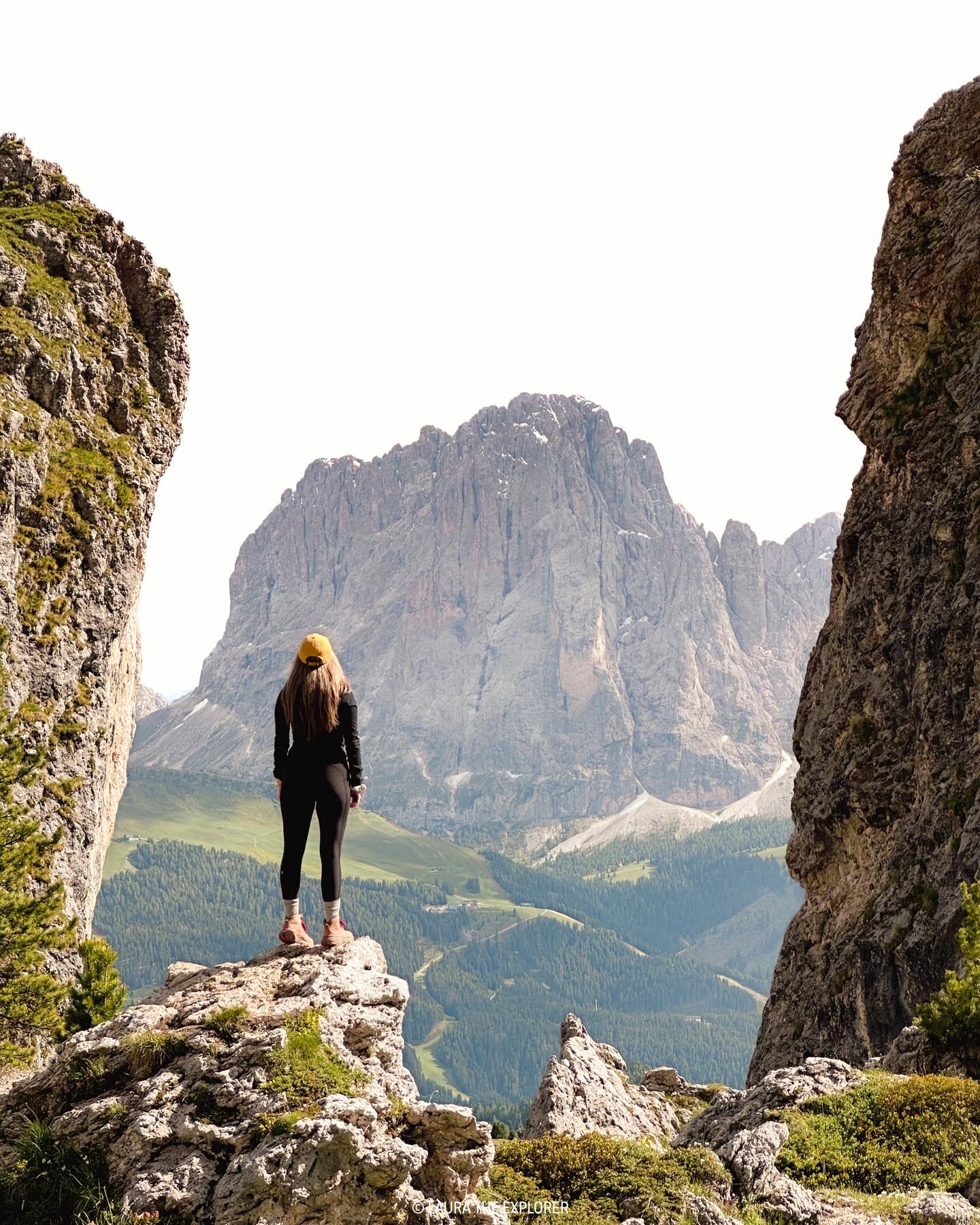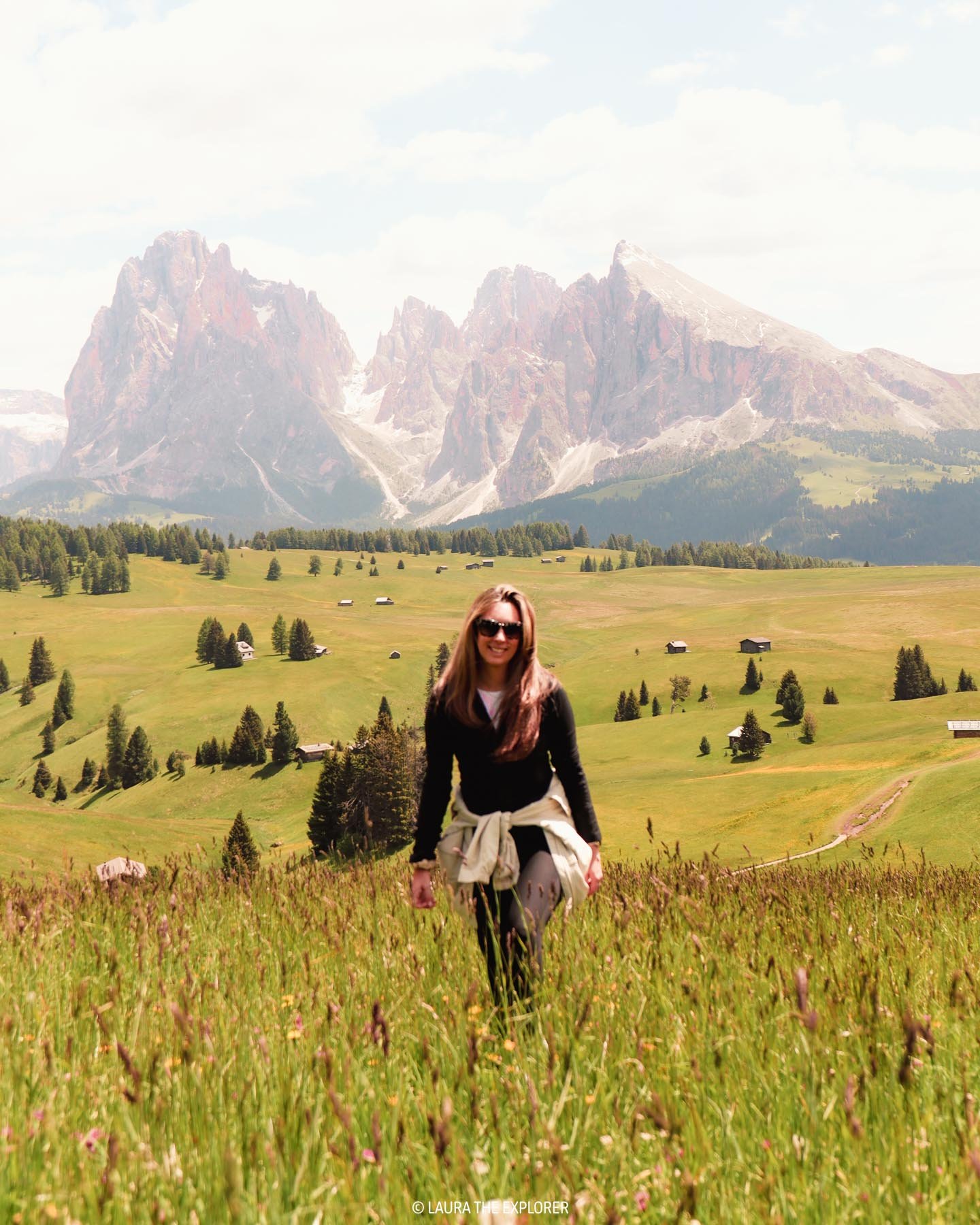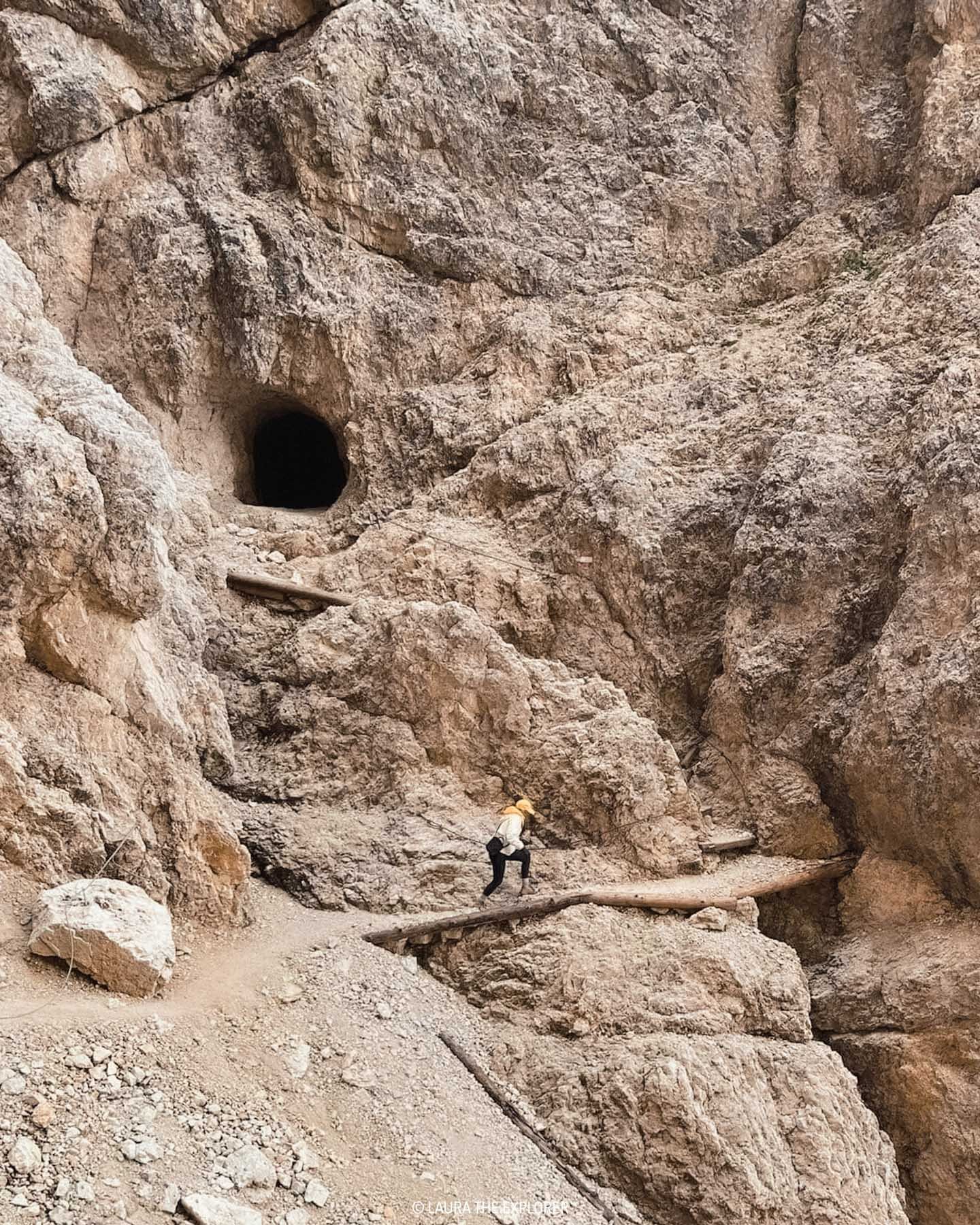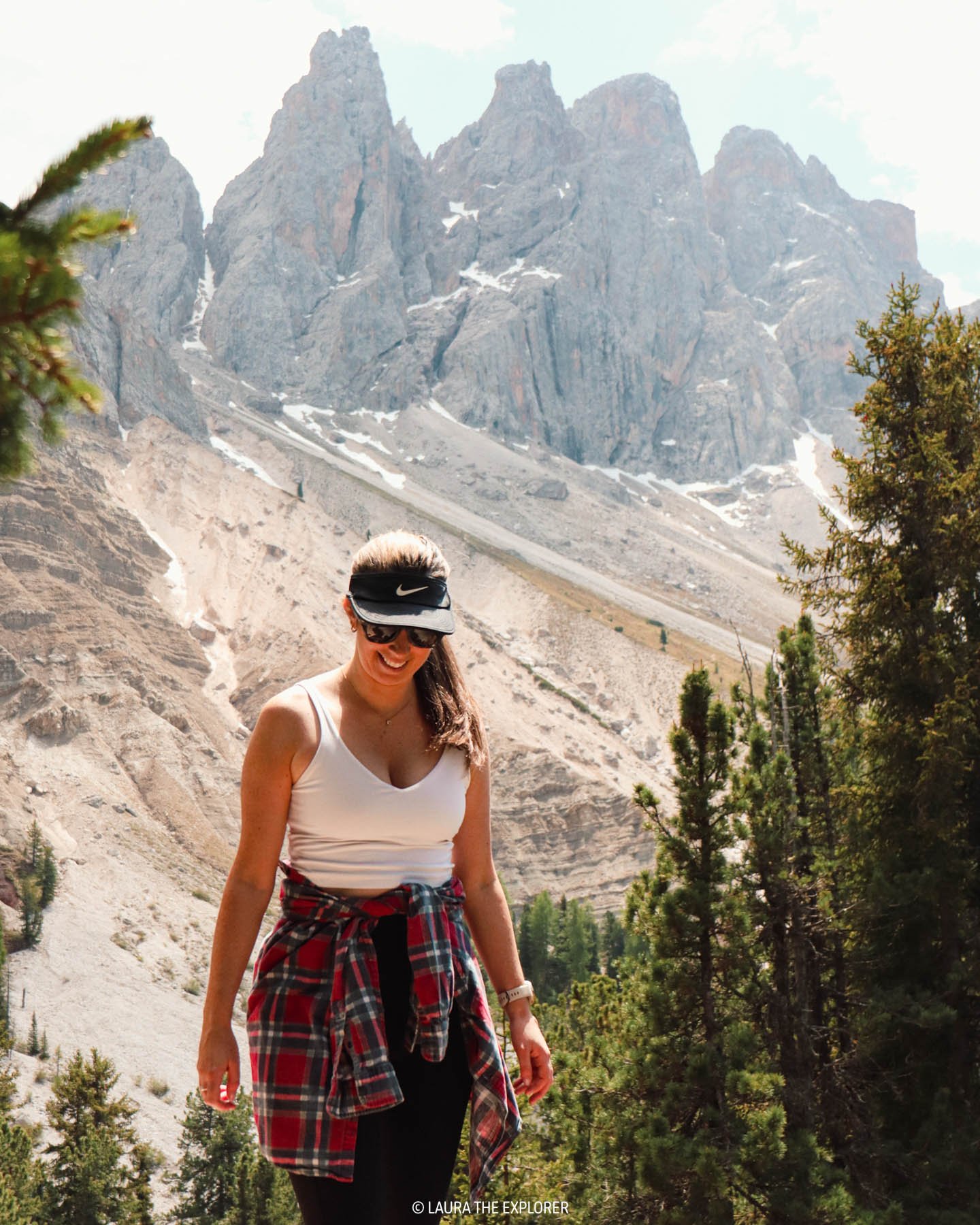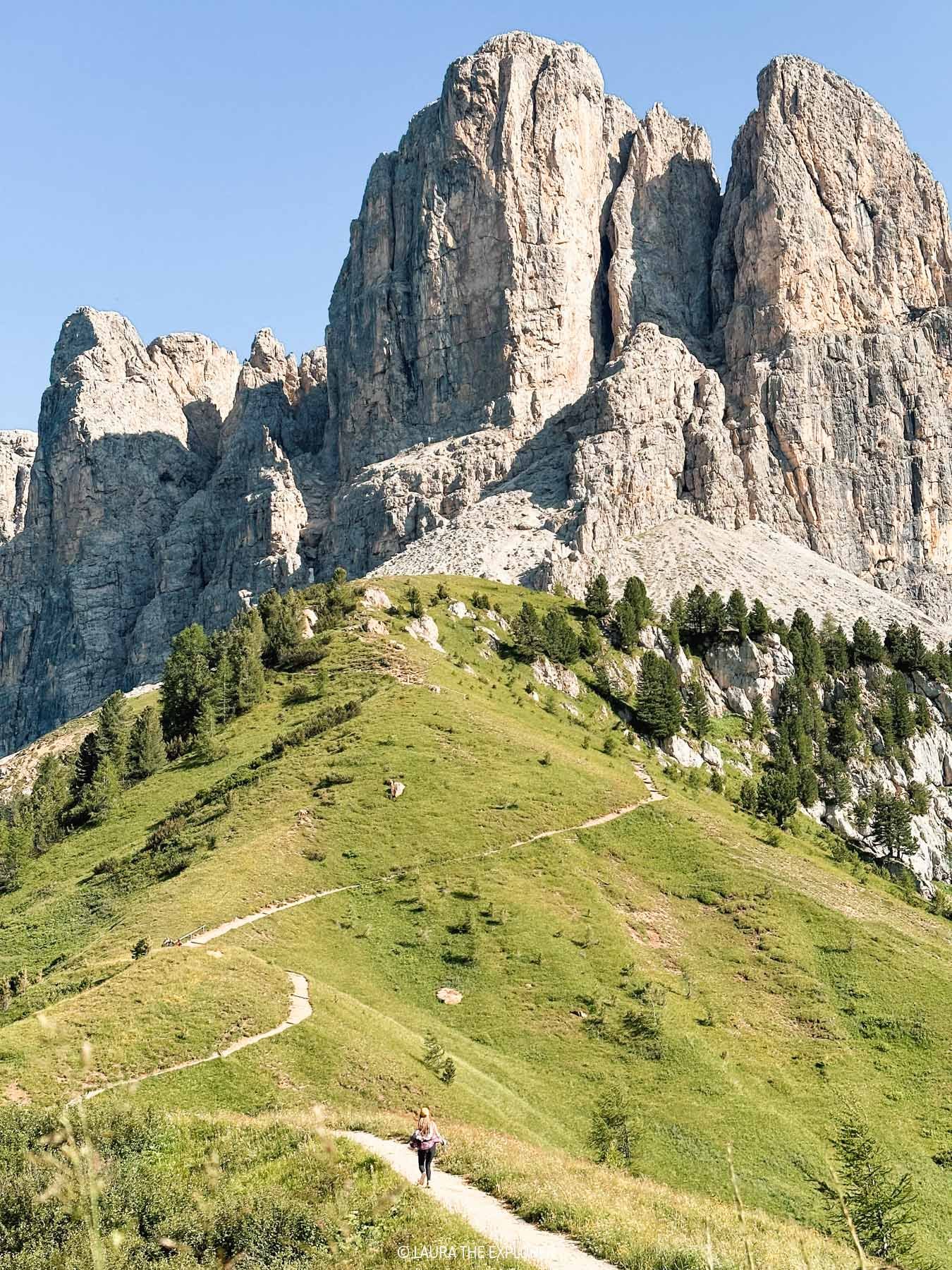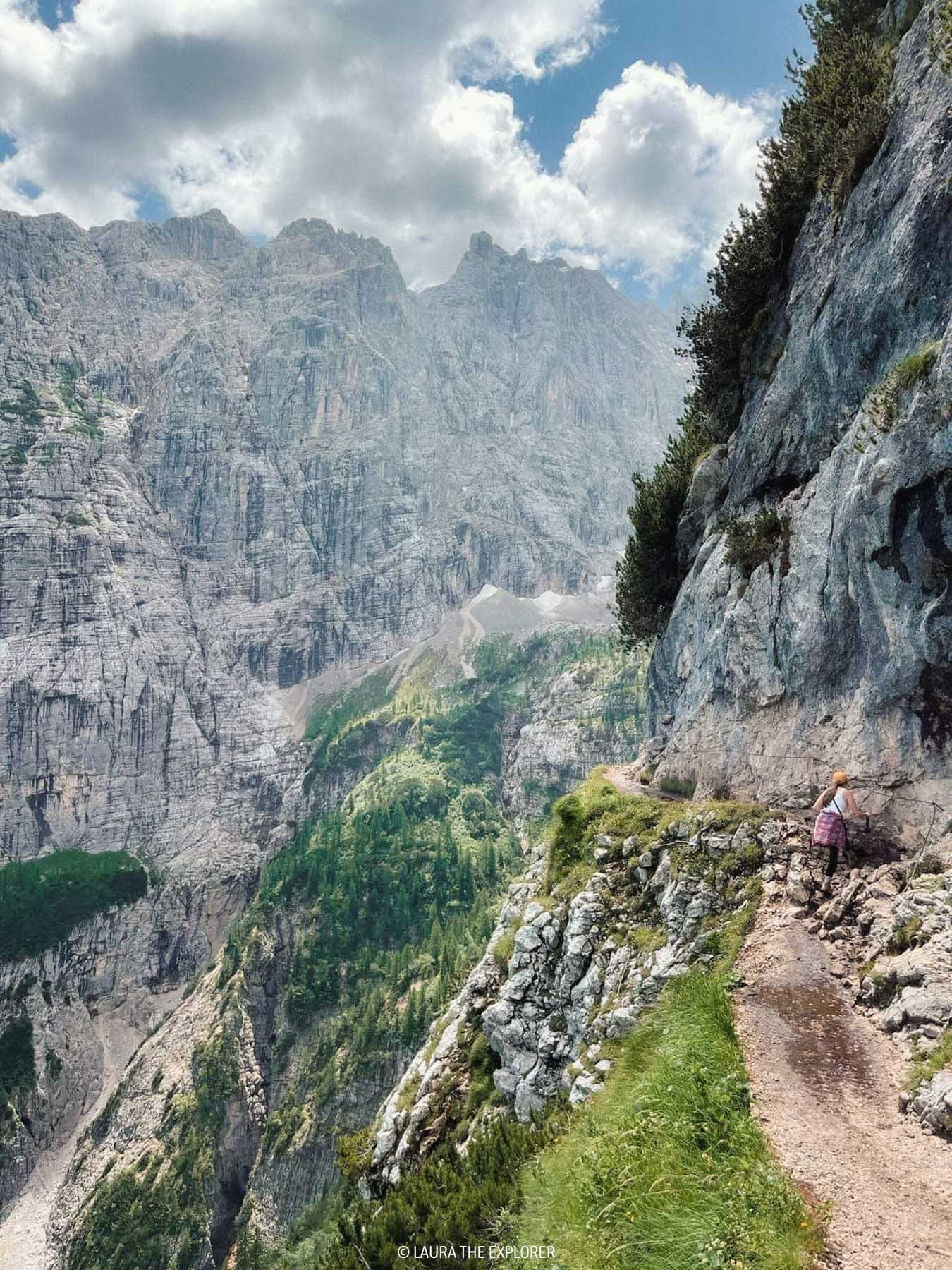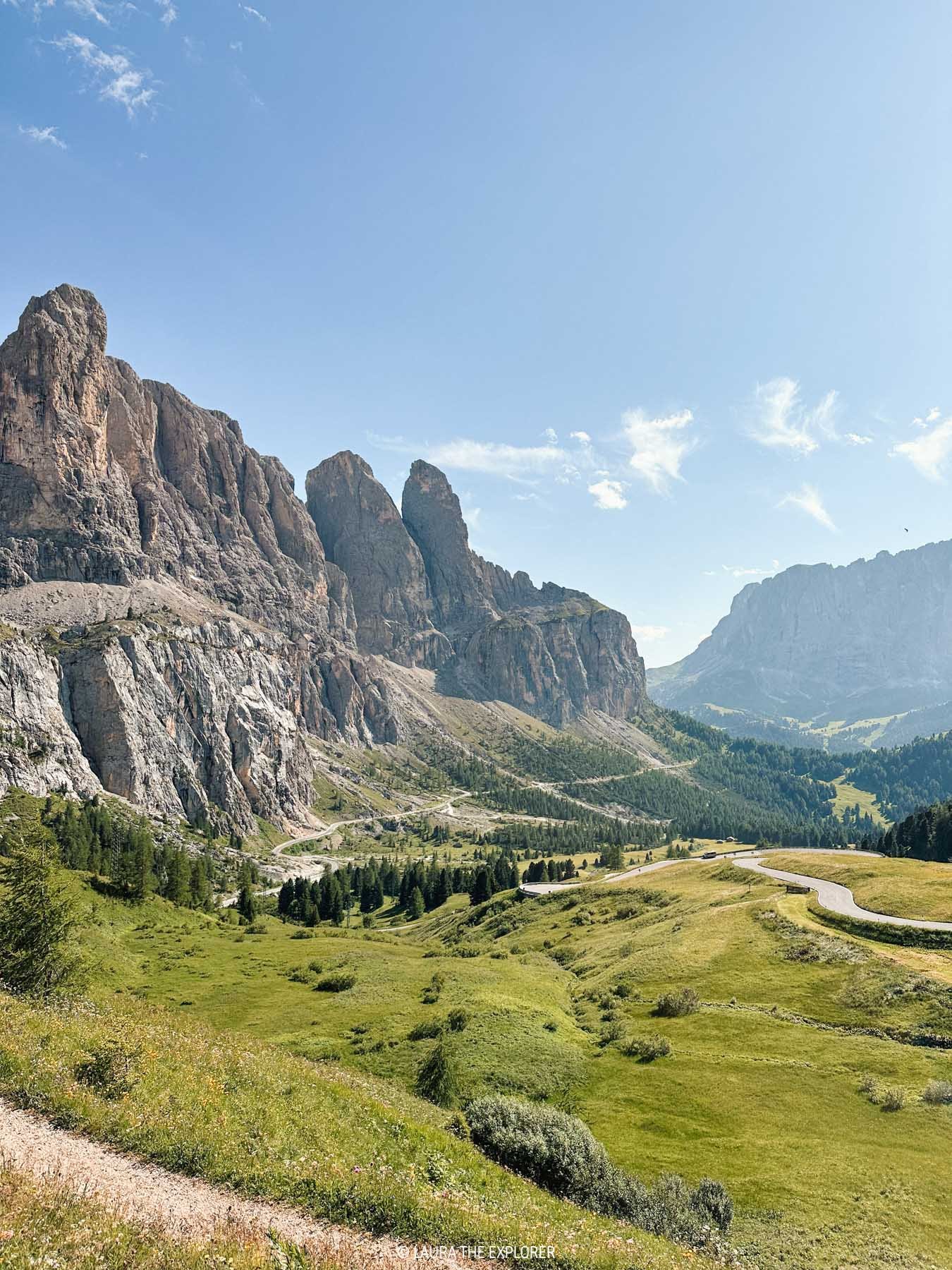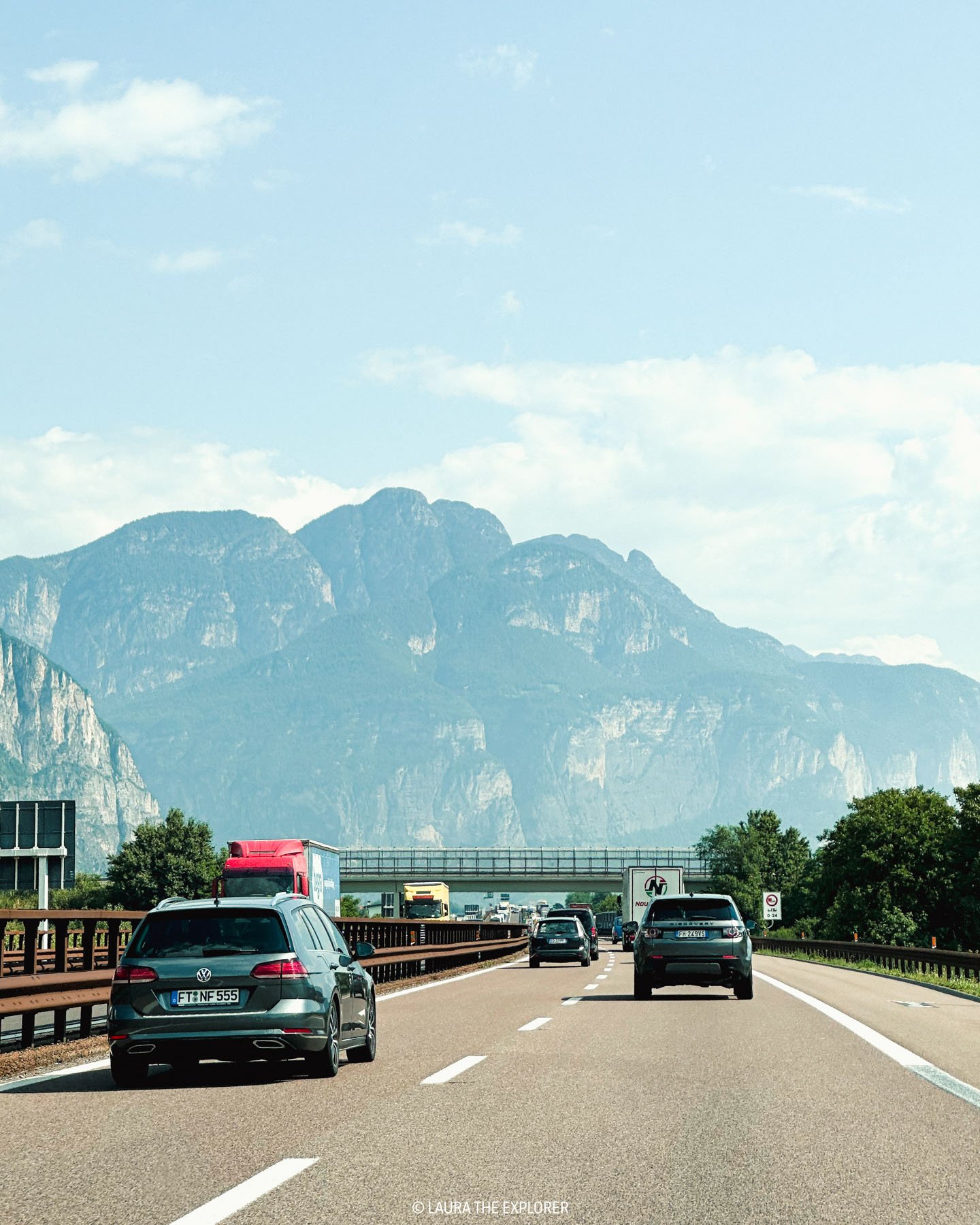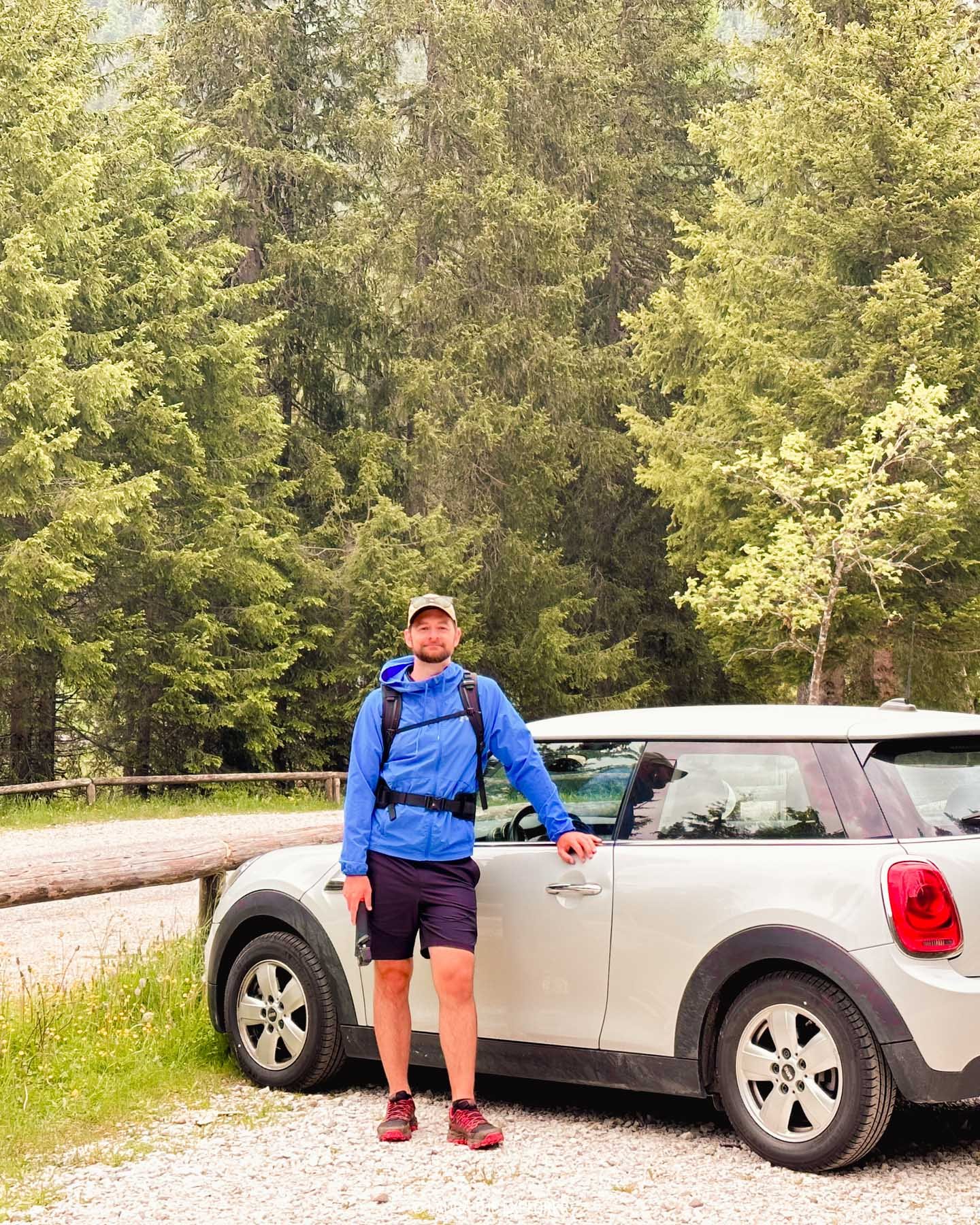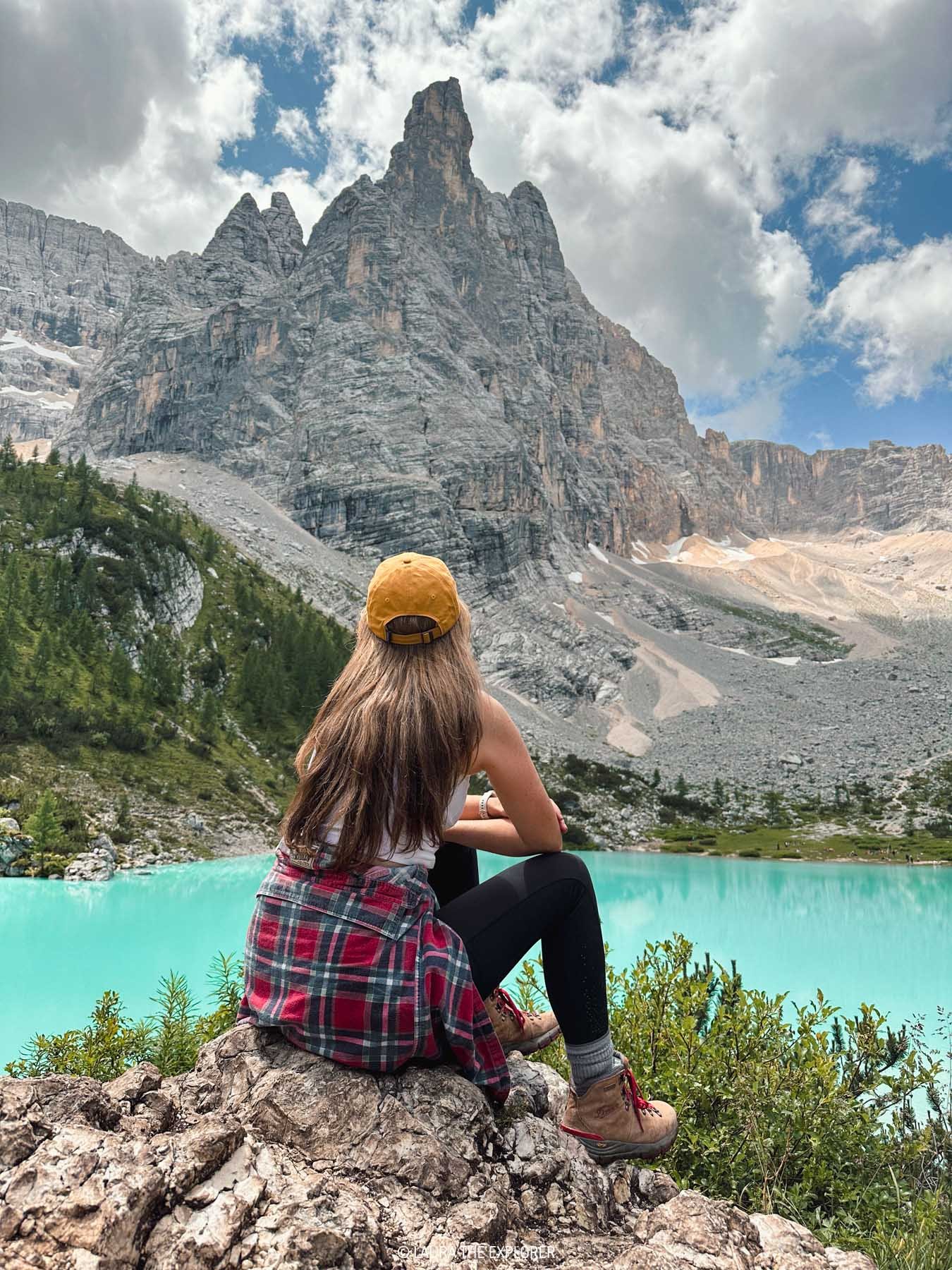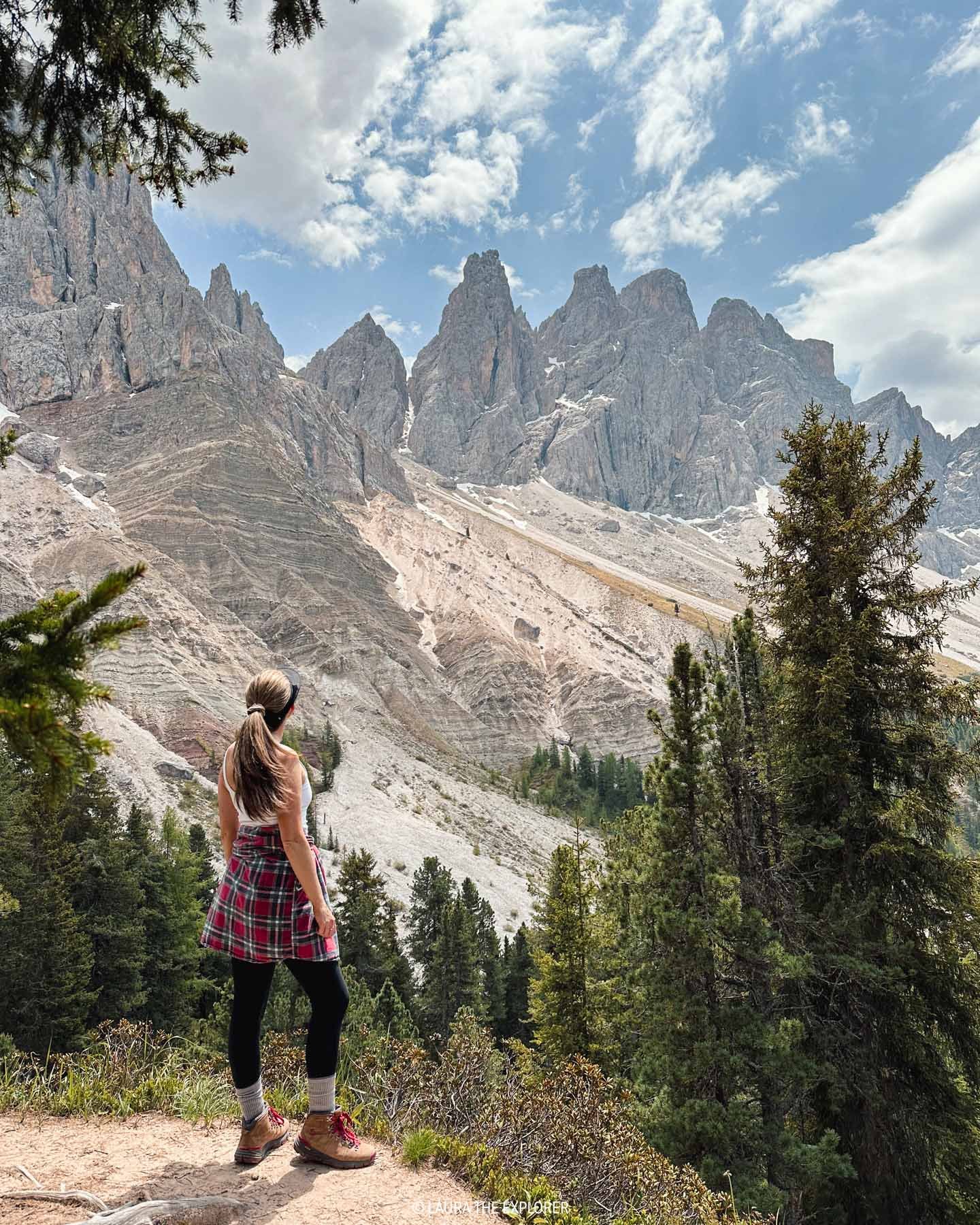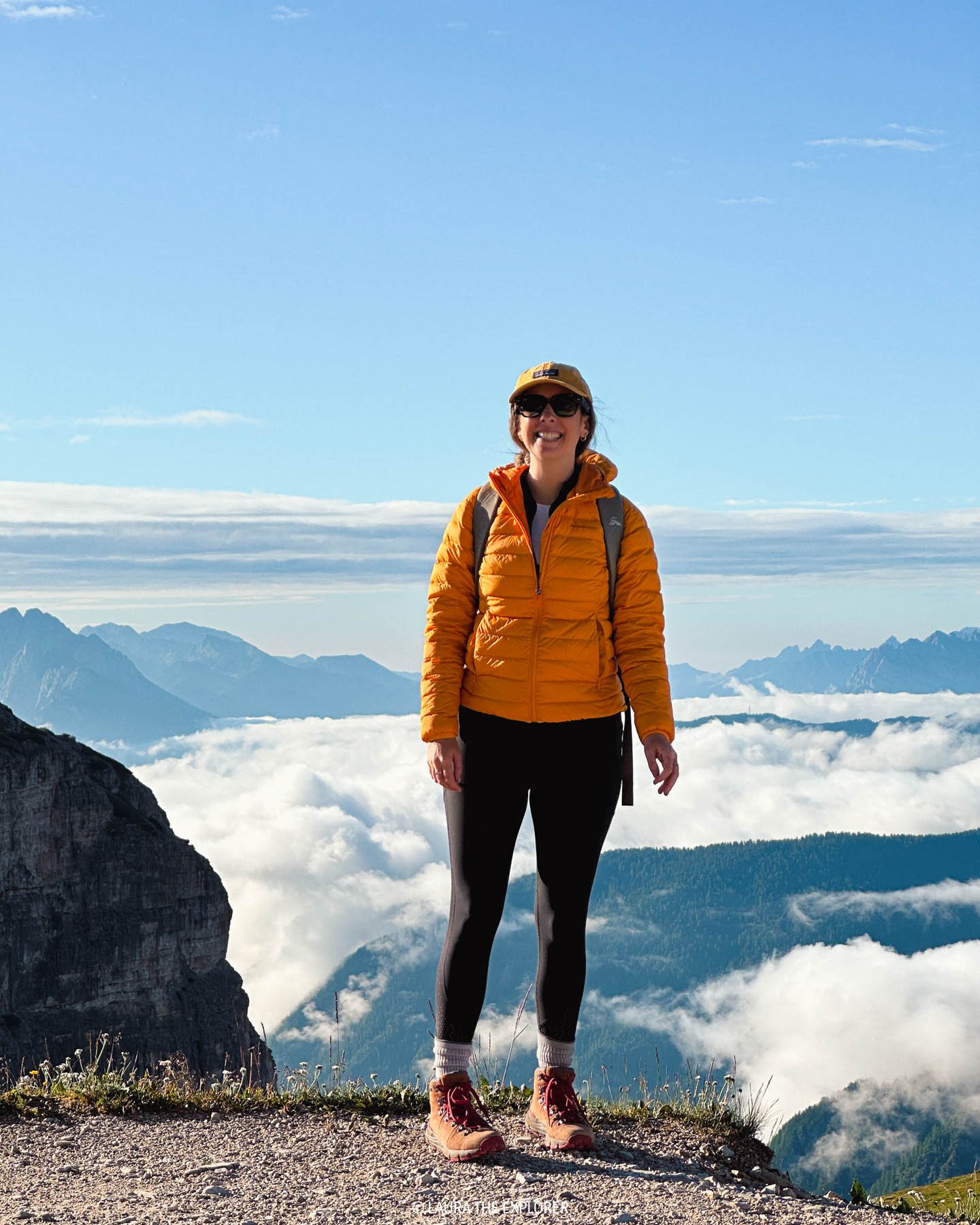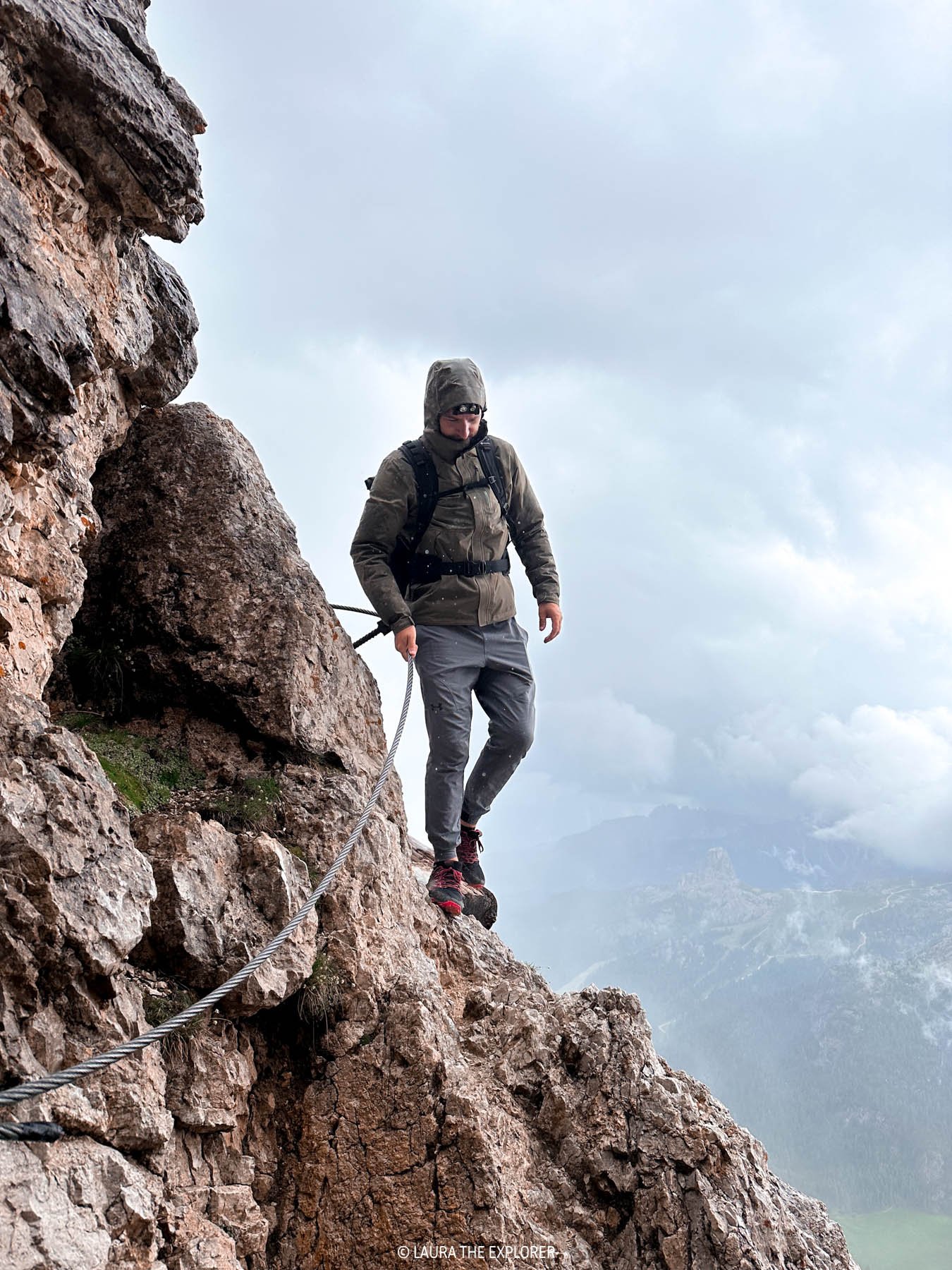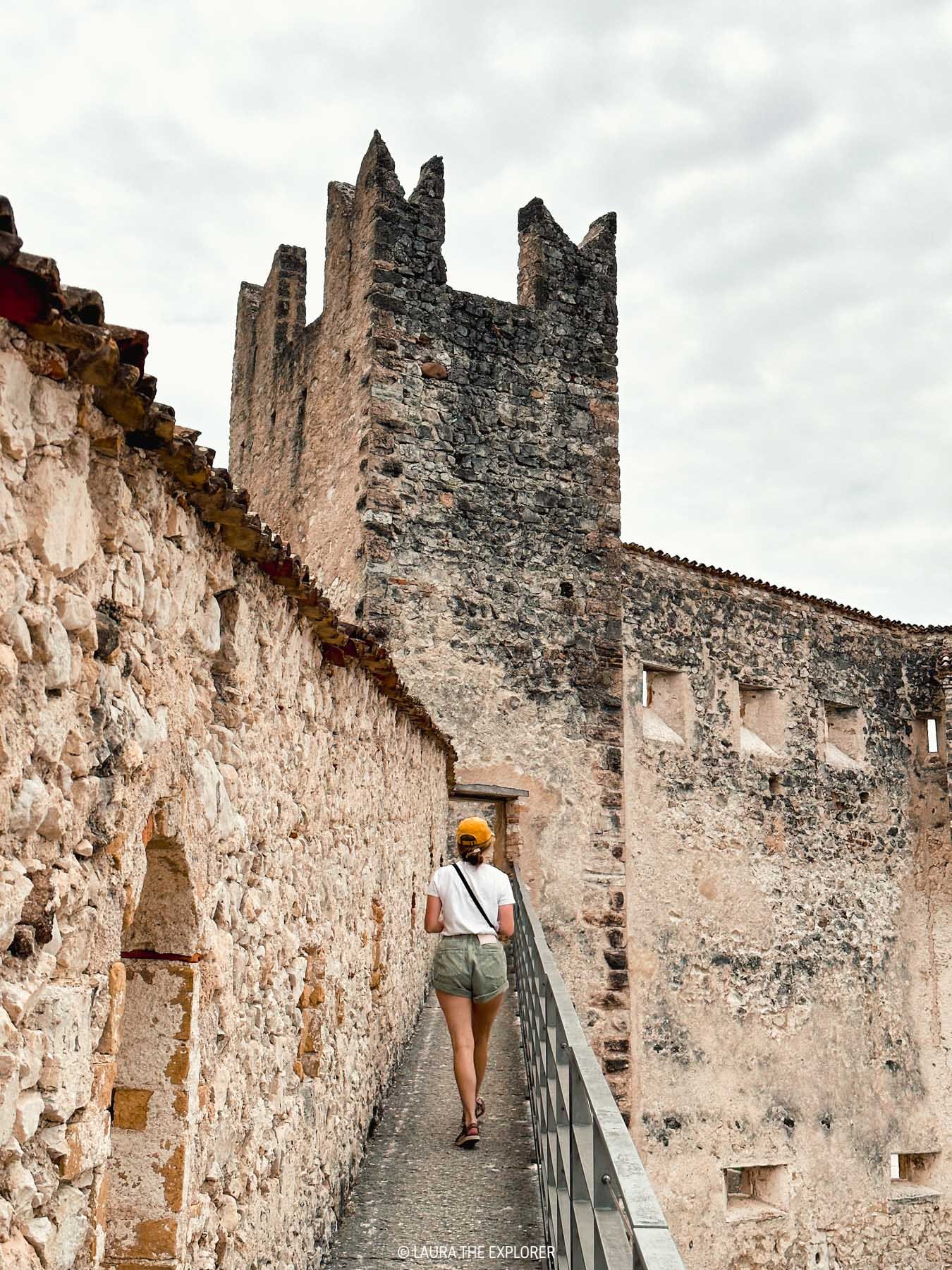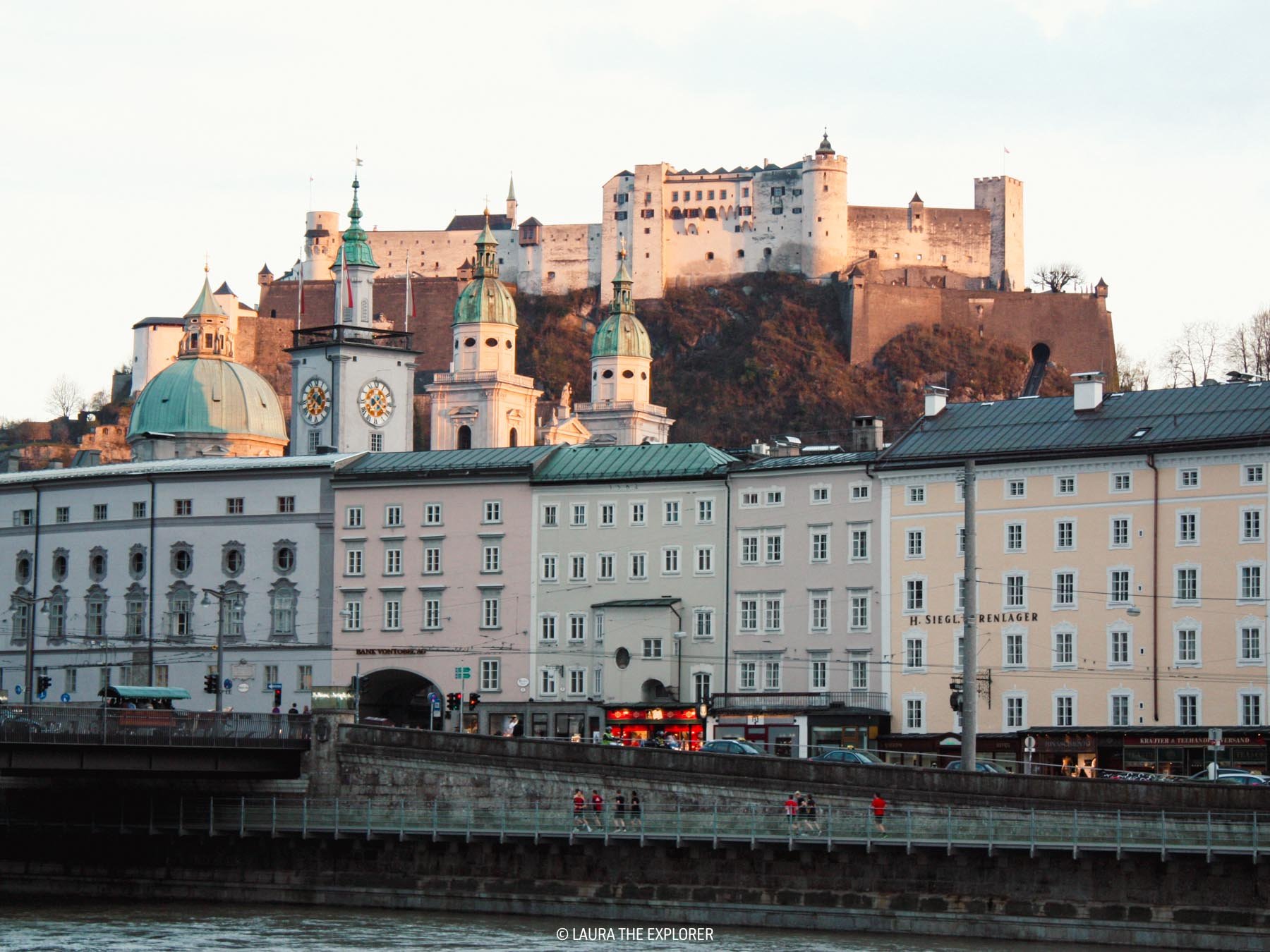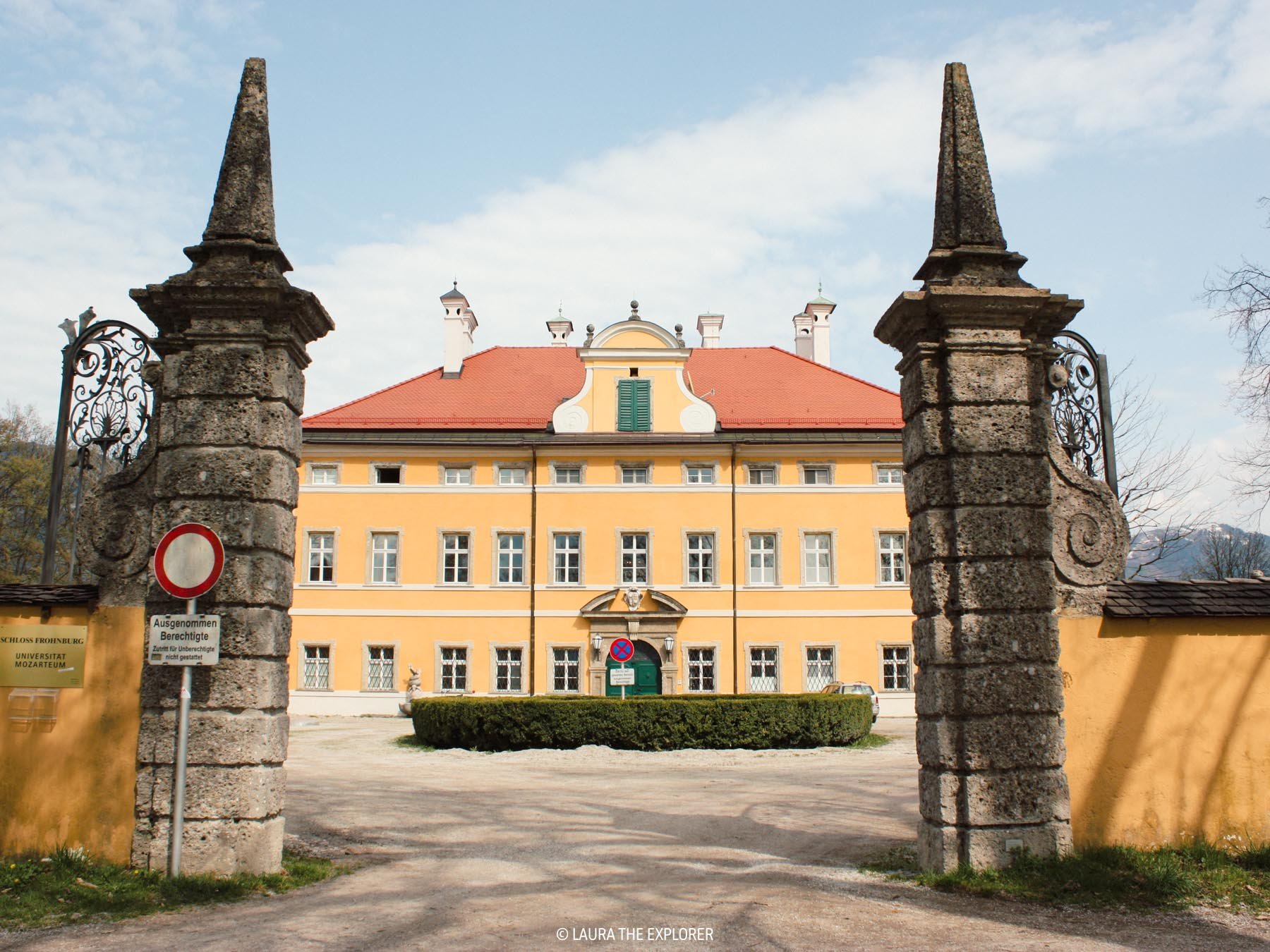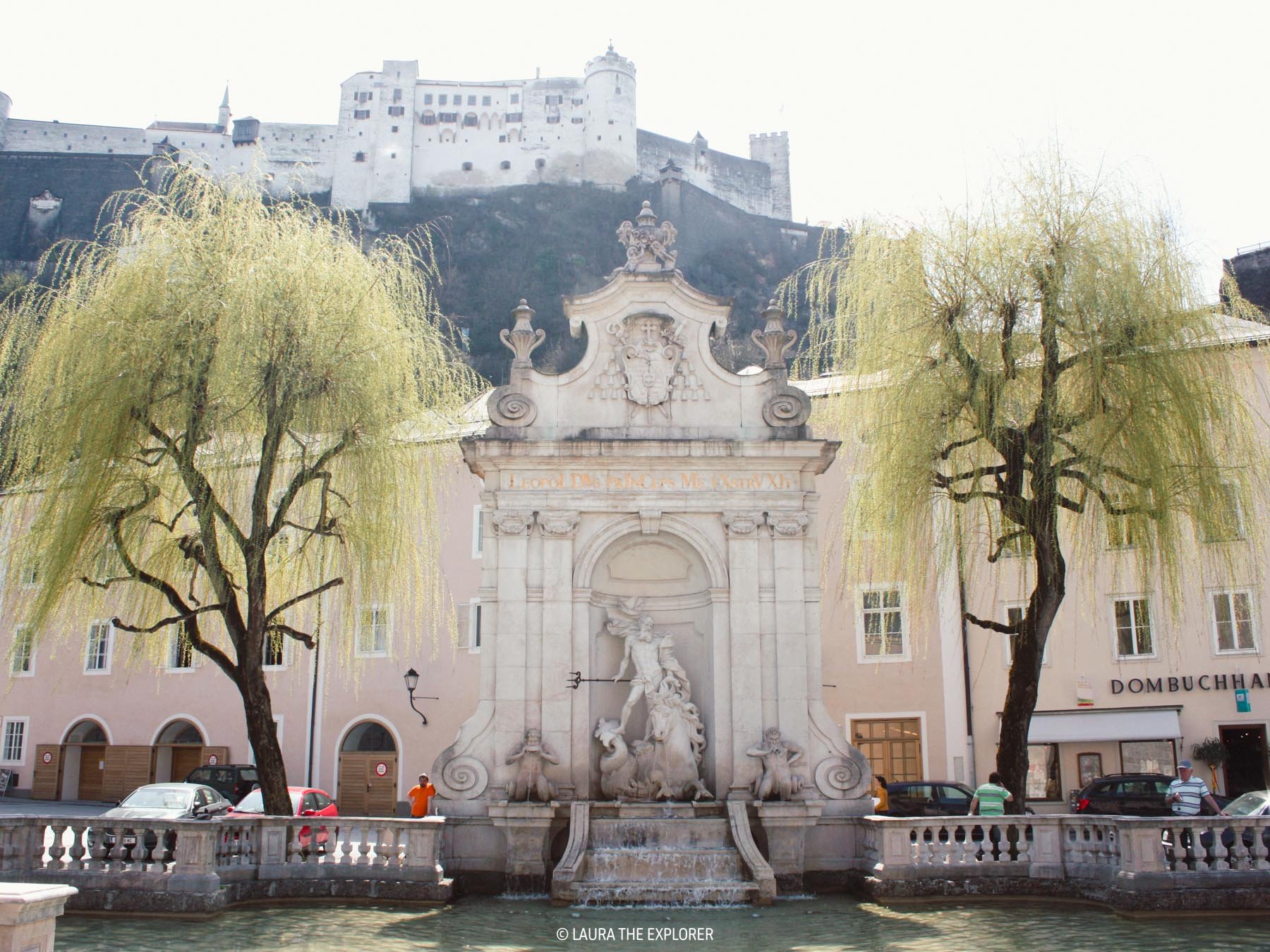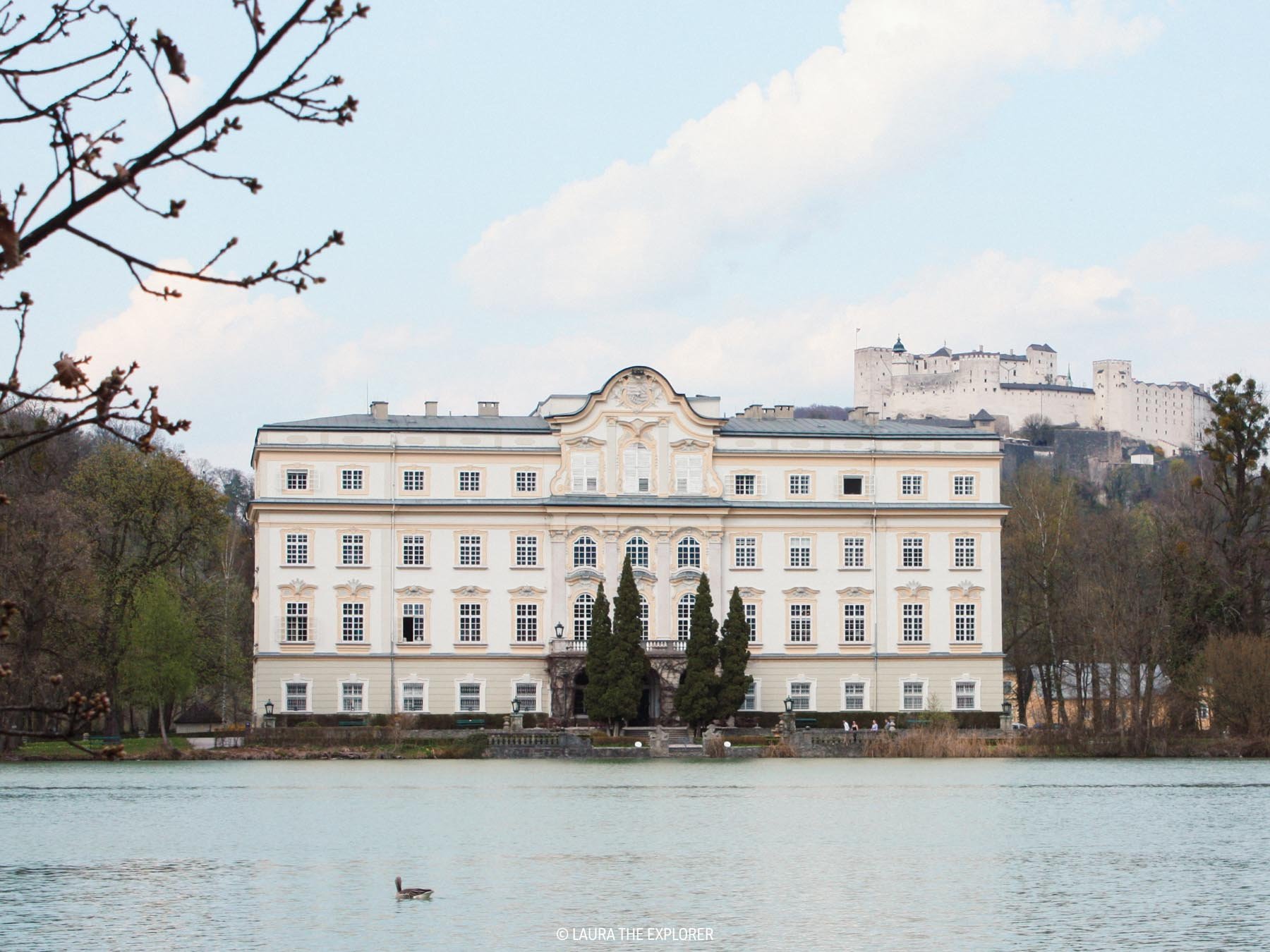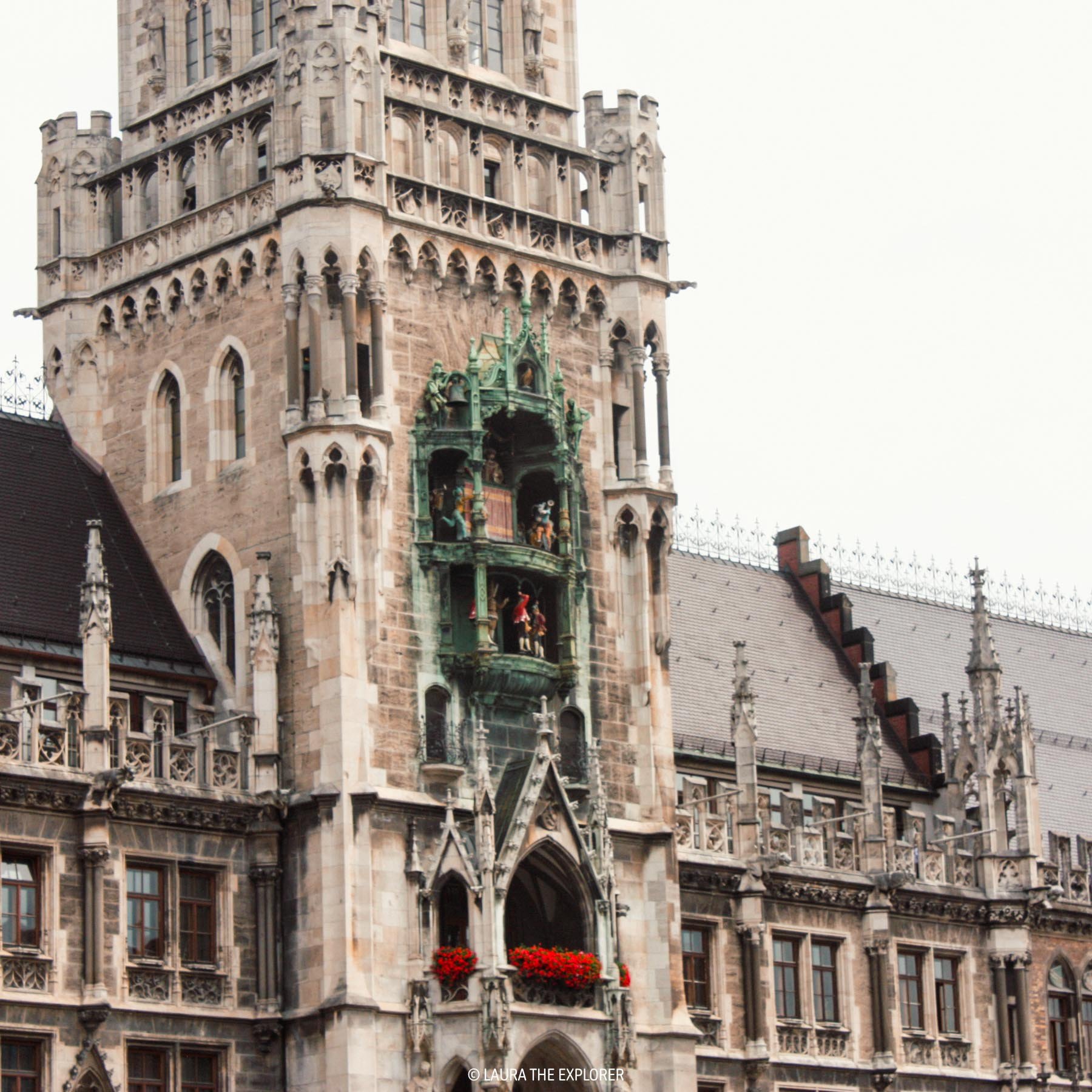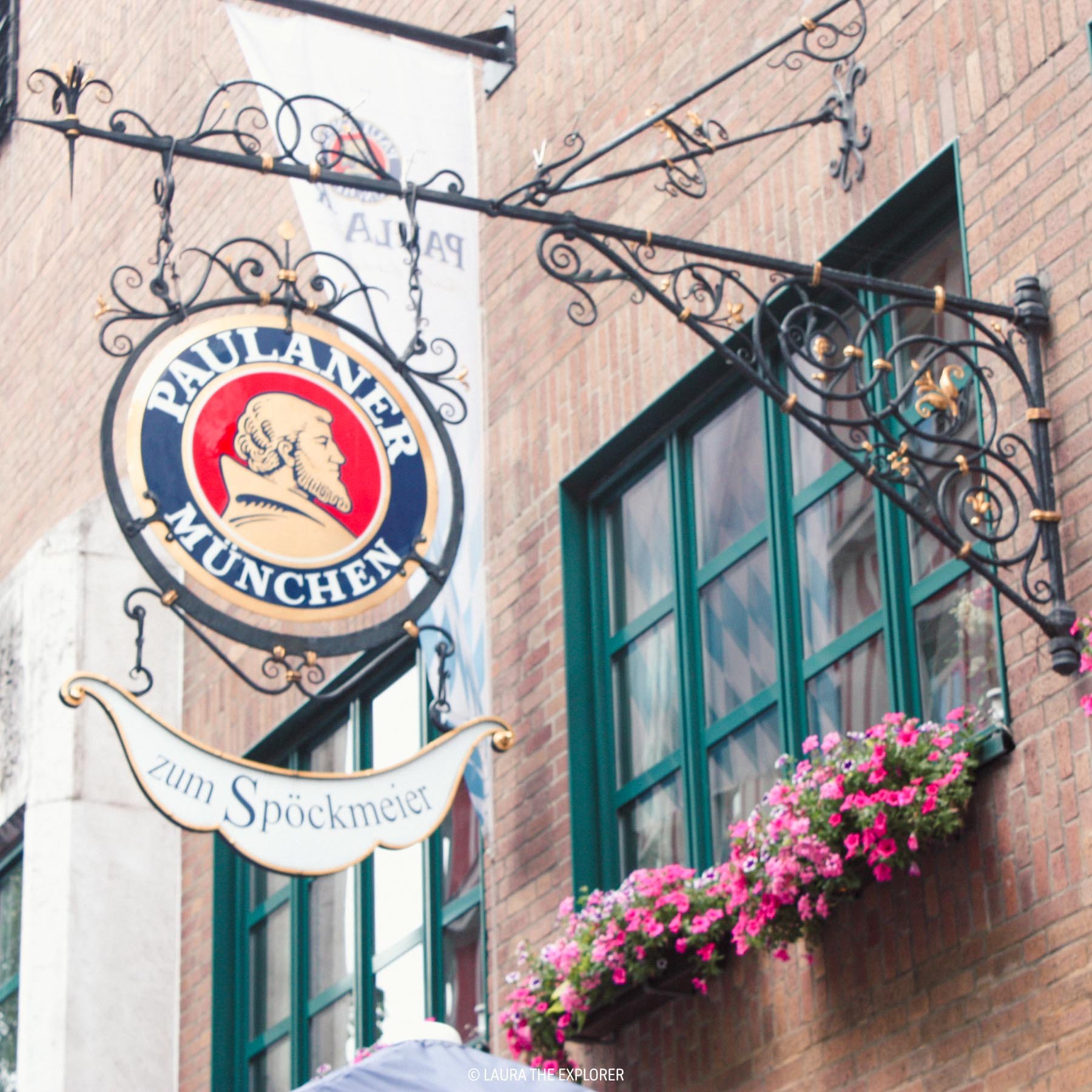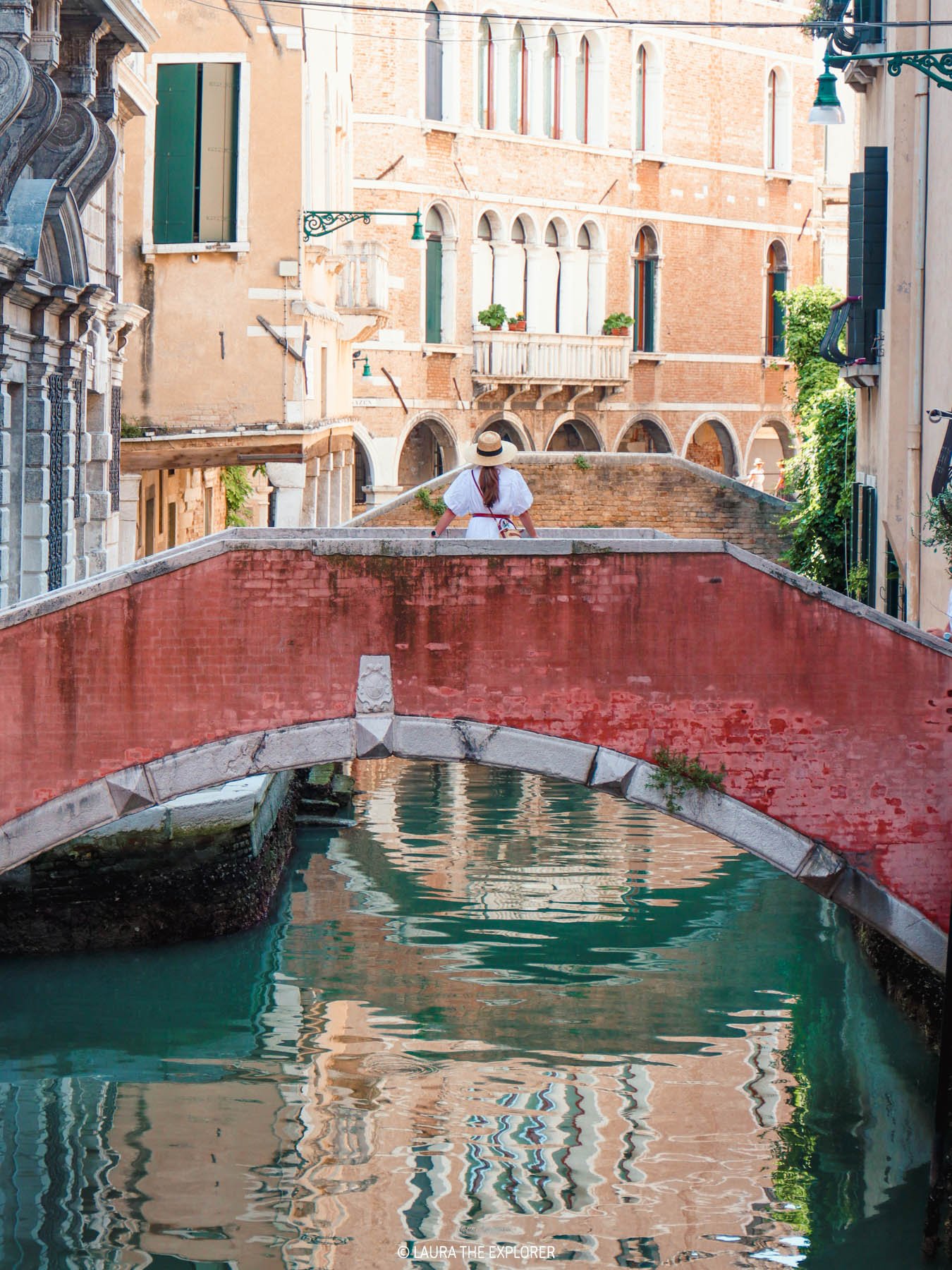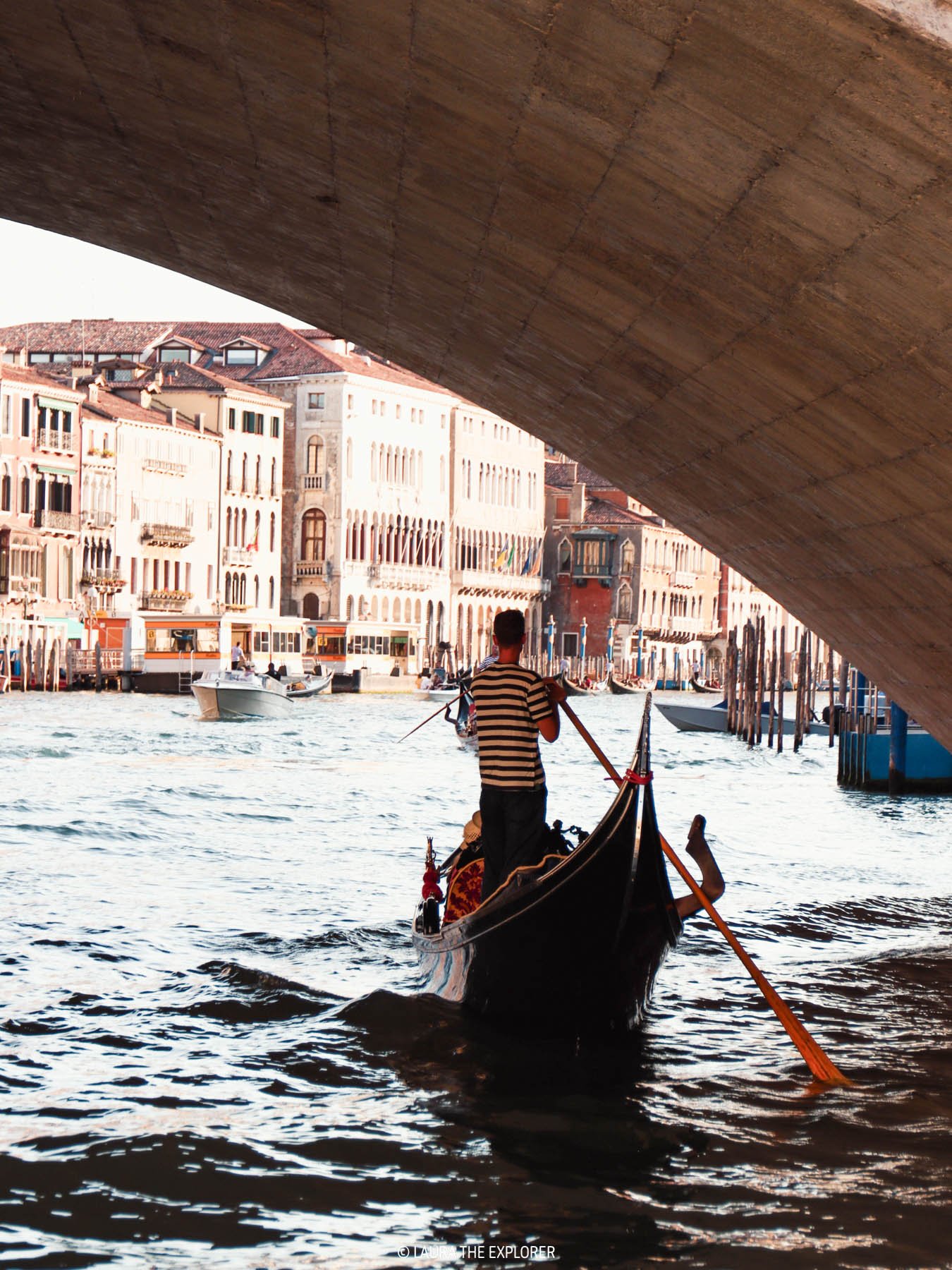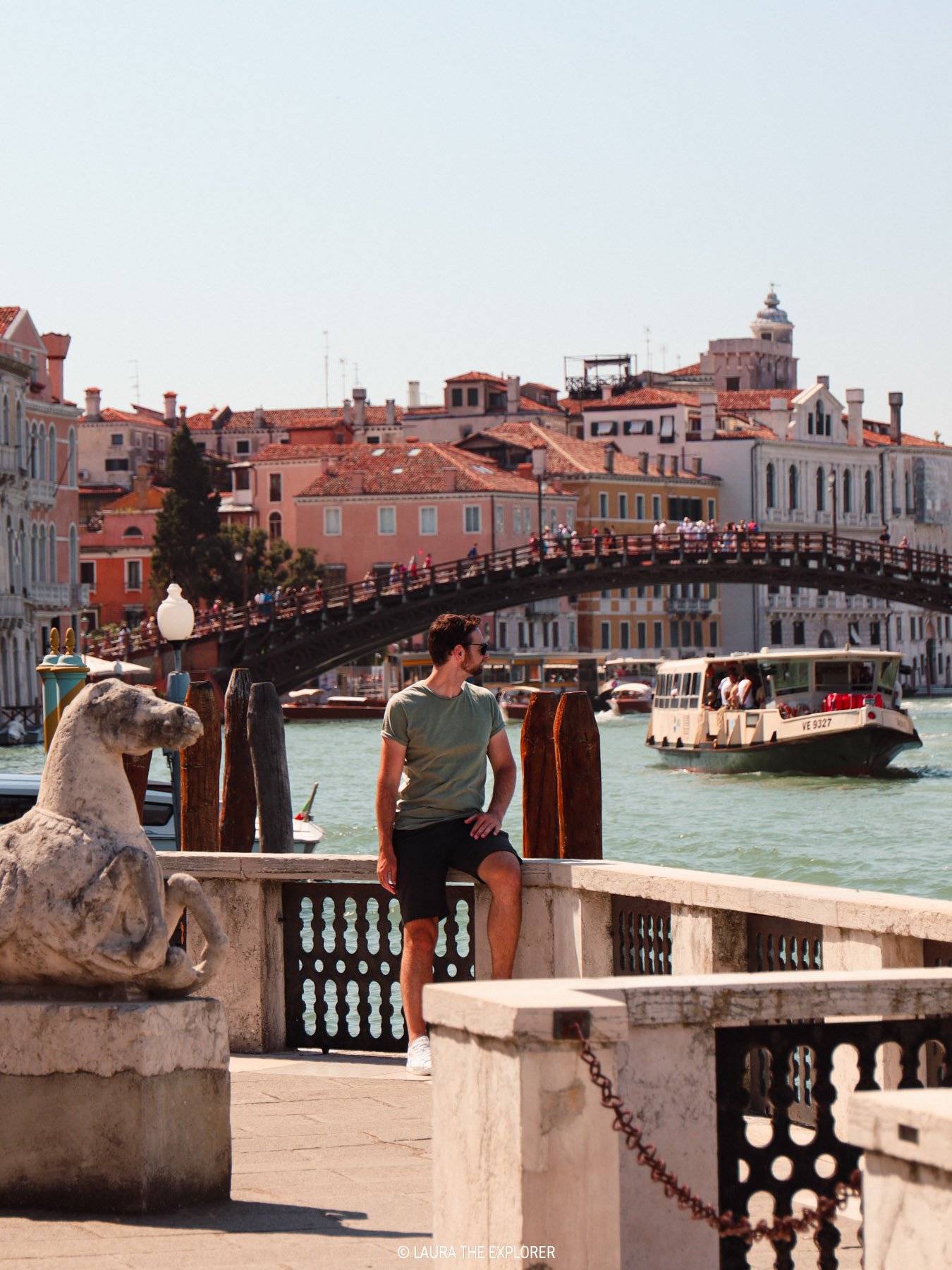A Road Trip from Lake Garda to the Dolomites
Road tripping through Northern Italy is a bucket list experience.
From vineyard-lined lanes to winding mountain-top passes, a road trip from Lake Garda to the Dolomites is one of the most scenic drives in Europe. Encompassing some of the best geographical features in Northern Italy, prepare to be blown away by the sparkling lakes, the towering mountain peaks, and picturesque alpine architecture.
With a culture, palate and climate unique to the region, the curious Austro-Italian mix of Trentino-Alto Adige will leave your eyes and tastebuds wondering where you’ve travelled to!
After spending a month travelling all over the region, we can safely say it’s one of the best road trips we’ve ever done. So much so, we even started planning our next trip before we left!
With endless twisty roads, epic hikes and local wines to discover, this is a region that will easily have you hooked.
A quick heads up: This post may contain affiliate links.
We only ever recommend products or services that we use and love. You won’t pay anything extra if you make a purchase through one of these links, but we’ll get a small commission which helps keep the blog running. Thanks for your support!
Lake Garda to the Dolomites
Getting to Lake Garda
What to see in Lake Garda
What to see between Lake Garda and the Dolomites
Routes from Lake Garda to the Dolomites (including map)
Driving in the Dolomites
Where to stay in the Dolomites
Essentials for a Dolomites road trip
THE STARTING POINT - GETTING TO LAKE GARDA
I’ve based this itinerary’s starting point at southern Lake Garda, but it can be easily adapted to suit other nearby transport hubs and popular Italian destinations such as Verona, Bergamo, Lake Como, or Milan.
Whilst the route is predominately focused on a road trip using a personal/rental vehicle, it’s also possible to do the majority of this itinerary using public transport. I’ve included public transport details where it is a possibility.
FROM VERONA TO LAKE GARDA
Verona is a great option for flying into the region and picking up a rental car. Whilst it’s a relatively small regional airport, it is known as the Gateway to the Dolomites, and receives flights from across Europe, the Middle East, and Northern Africa. It’s also well equipped with rental cars, with all the major players such as Avis, Budget, Europcar and Hertz available, along with some local Italian rental car options.
All of the options are easily comparable at Auto Europa.
From Verona Airport, it’s only a short half an hour drive to the shores of Lake Garda where this itinerary commences.
Public Transport | Verona and Lake Garda are well connected via public transport.
The VeronaLink airport bus (ticket machine at arrivals) connects the airport with the main train hub of Verona Porta Nuova, from where trains runs regularly to Peschiera del Garda and Desenzano del Garda on the shores of Lake Garda. Buses and ferries then connect these towns to other destinations around the lake.
Alternatively, in the summer months there are direct buses from Verona Airport to Peschiera del Garda and the town of Garda.
FROM MILAN TO LAKE GARDA
Milan is served by three airports, making it another popular starting point for a road trip to Lake Garda and the Dolomites. The largest airport in Northern Italy, Milan Malpensa Airport, handles most of the international traffic from the US, and is also an Easyjet hub. This major airport is well equipped with all major car rental companies and local Italian car rental companies. Located on the side of Milan furtherest from Lake Garda, it’s a slightly longer drive of about 2hrs to reach the lake. However, given the volume of flights into Milan Malpensa, it could work out as a more convenient starting point.
Milan Linate Airport is predominately served by flights from within Italy and some European destinations. It has a similar selection of car rental companies to Verona Airport, and takes a little over an hour to reach Lake Garda thanks to it’s location to the east of central Milan.
The third Milan airport is actually located in the city of Bergamo. Orio al Serio Airport is extremely well located for starting a road trip to Lake Garda and the Dolomites, located less than an hour’s drive from Lake Garda. A hub from RyanAir, Bergamo is served by flights from across Europe, North Africa, and the Middle East. Again, the car rental companies available to Bergamo are very similar to Verona and Milan Linate.
Public Transport | Milan and Lake Garda are also well connected via public transport.
From Milan Malpensa, both regional and frecciarossa (highspeed) trains connect through to Desenzano del Garda and Peschiera del Garda on the shores of Lake Garda.
From Milan Linate, take the Linate Shuttle or the Milan metro to Milano Centrale station and then either a regionale or frecciarossa through to Desenzano del Garda and Peschiera del Garda.
From Bergamo Orio al Serio, a connection or two is required to reach Lake Garda. Either take the Orioshuttle into Milano Centrale and catch a train on from there, or take a bus or taxi to Bergamo train station and catch the train on from there.
WHAT TO SEE IN LAKE GARDA
Before heading out from Lake Garda to the Dolomites, there is plenty to see and do in Lake Garda (or if travelling in reverse, allow some time in Lake Garda before dropping your rental car in Verona or Milano). There’s enough to easily fill two or three days (or more!), otherwise pick either the north half or the south half of the lake and spend the day exploring.
HIGHLIGHTS OF THE SOUTHERN HALF OF LAKE GARDA
SIRMIONE
If you woke up in front of Sirmione Castle, you’d be forgiven for thinking you were on an island somewhere in the Mediterranean, and not on a lake! The bright turquoise waters that fill the moat of this lakeside castle are quite unbelievable, and make this one of the most beautiful places to see in Lake Garda.
After admiring the castle, head all the way to the point of the peninsula where you’ll find ancient ruins of a expansive roman villa (Grottoes of Catullus) and Jamaica Beach Club - the perfect place to refresh and have a swim at the flat rock beaches that surround it. Best of all, this might be the only beach club in Italy that doesn’t charge entry fees!
GARDONE RIVIERA
Whilst Lake Garda is generally a little more relaxed than its famous neighbour Lake Como, Gardone Riviera proves the exception to the rule as one of the most glamorous places in Lake Garda. The charming, yet luxurious town is home to some beautiful architecture, such as Villa Alba and Grand Hotel Gardone.
PESCHIERA DEL GARDA
Peschiera del Garda is another of the most beautiful towns in Italy. It’s star attraction is the UNESCO World Heritage fortress, built by the Venetians from the 15th century. It’s easy to spend a couple of hours wandering around the old town and canals. Alternatively, take a short boat tour around the old fortified city walls.
Sirmione Castle and the Sirmione Peninsula
HIGHLIGHTS OF THE NORTHERN HALF OF LAKE GARDA
LIMONE SUL GARDA
Limone sul Garda (or, simply Limone) is a picturesque town in the north west of Lake Garda. Nestled under imposing rock cliffs, the waterfront is packed with bars, restaurants and boutique shops. Wander the labyrinth of backstreets (some so small you might need to duck!) until you end up in the beautiful Porto Vecchio.
Spiaggia Cola just south of the town centre is well set up for swimming. The public beach has plenty of amenities and space to lay out a towel.
STRADA DELLA FORRA (AKA THE JAMES BOND ROAD)
10 minutes south of Limone, you’ll find one of the most picturesque roads in the world, made famous after featuring in Bond’s Quantum of Solace film. This is definitely a spot to visit if you’re into motorcycles and luxury cars as it’s a popular place to drive.
Accessible from the tunnel at the start of SP38 Via Beneco (google maps spot linked here), the Strada Della Forra winds it way up the mountainside with alternating tunnels and sweeping lake views, before passing through a ravine and ending up in the mountain top town of Tremosine Sul Garda.
Plan your route carefully as during the summer season, the road is open in one direction only in the middle of the day.
MALCESINE
Despite being on the opposite side of the lake to Limone, it’s easy to jump on the ferry that runs regularly between the two. Head straight to the top of iconic Malcesine Castle for panoramic views of the lake and terracotta-tiled town.
RIVA DEL GARDA
The main centre of northern Lake Garda, Riva del Garda has an extremely picturesque centro storico and marina. With plenty of accommodation options, restaurants, and walking and cycling trails, Riva makes an excellent base for your time in Lake Garda.
RENT A SCOOTER AT LAKE GARDA
If you’re travelling via public transport, but still want to be able to explore as much of Lake Garda as possible, a great option is to rent a scooter for a day or two. It will give you a lot more freedom than the bus and ferry schedules, and also the opportunity to explore some of the best beaches/lakefronts.
We hired our scooter from Motoragazzi (not sponsored, just highly recommended!) which allowed us to completely circumnavigate the lake whilst avoiding road congestion and finding a carpark. They have seven branches around Lake Garda and also offer one-day self-guided tours.
WHAT TO SEE BETWEEN LAKE GARDA AND THE DOLOMITES
Right, it’s time to head out of Lake Garda and on towards the epic Dolomites! The main route follows the Adige River from southern Lake Garda up towards Bolzano (Bozen).
Join the A22 Autostrada (tolls) for the fast route, otherwise, jump on SS12 for the scenic route that runs through the endless vineyards that line the valley.
MADONNA DELLA CORONA
In a country that’s home to Roman Catholicism, the architecture has to be pretty unique to stand out in a sea of historical churches. But clinging to the side of the mountain at the foot of the Dolomites, this is one site that won’t leave you church-fatigued.
A religious site since around 1000AD, the first version of Santuario Madonna della Corona was built in the1670’s and remained in various forms until being rebuilt in the 1970’s, and thanks to its unique location, appears to be suspended in mid-air.
Less than an hour from either southern Lake Garda or Verona, wind your way up Via Enzo Ferrari (yes, that Ferrari) to the village of Spiazzi. There’s plenty of parking in this parking lot (bring cash). From the main road, make your way down the trail/path Località Gabbiola. I’d recommend decent footwear to make life easier, but we did witness plenty of nonnas making their way down in their Sunday best!
Public Transport | It is possible to visit using public transport, though you’ll need to allow time and take the original (longer) pilgrimage walking route from Brentino Belluno. Take the train to Borghetto, then bus #472 to Brentino Belluno.
M.A.R.T. - ROVERETO
About an hour further up the valley from Spiazzi is our next stop (SS12 and A22 take about the same amount of time, so skip the toll road and take SS12 instead).
The Museum of Modern and Contemporary Art of Trento and Rovereto (MART) is located in the small city of Rovereto. Housed in an incredible building designed by local Northern Italian Mario Botta, the incredible domed courtyard leads you in to a great display of modern art, focusing on Northern Italian artists. MART is the place to visit if you’re after a refresh from all the religious art that Italy is generally known for! We were treated to an exhibit featuring Gustav Klimt’s The Three Ages of Woman.
Public Transport | MART is easily accessible via public transport, about a 15 min walk from Rovereto station on the main Brenner railway line.
CASTEL BESENO
Another 15 minutes drive up SS12 is Castel Beseno, one of the remaining medieval fortresses that line the Adige Valley.
Located up on a high ridge, the castle is strategically located with incredible views up and down the Adige Valley and the Brenta Dolomites mountain range. It’s a great places to learn about the medieval history of the region, where these castles controlled the flow of goods and traffic from Northern Europe down into the Italian Peninsula.
Public Transport | Bus #301 runs from either Rovereto or Trento to the charming town of Besenello. From here, its a 15 min walk up hill to the castle.
TRENTO
Nestled next to the Adige River beneath the towering Brenta Dolomite range is the main Trentino-Alto Adige city of Trento. Full of amenities yet with a compact, walkable old city centre, Trento would make a great base for a night or two on a road trip from Lake Garda to the Dolomites.
We spent a month remote-working in Trento, and got to know the city really well. These are some of our favourite sights, but for more about Trento, check out our article: A Guide to Visiting Trento
CASTELLO DEL BUONCONSIGLIO | The main attraction of Trento is the Museum and Castle Buonconsiglio, located on the edge of the old town. This impressive castle features impressive fresco paintings aging from the 1400’s. Originally home to the Prince Bishop, the castle was luckily saved from bombing in World War I.
PIAZZA DEL DUOMO DI TRENTO | The Trento Duomo dominates the southern face of the main piazza, whilst the adjoining Diocesan Museum lines the eastern face. Both are constructed in Romanesque style, whilst the surrounding cafes and stores hint at the alpine architecture of the Dolomites. It’s a curious mix of both Italian and Austrian influence. The Duomo is most famous for hosting the Council of Trent in the 1500’s. The piazza features the Fontana del Nettuno as well as some incredible fresoces on Casa Cazuffi (above Cafe Italia).
PARCO NATURALE DEL DOSS | Located on a small mound across the Adige River, leafy Doss Park is home to several attractions, from the ruins of a paleo-christian basilica, to the columned rotunda mausoleum of local WWI hero Cesare Battisti, and the National Alpine Museum. There’s also the history museum Le Gallerie located in the decommissioned motorway tunnels that run below the hill.
MUSE - SCIENCE MUSEUM | Designed by celebrated Italian architect Renzo Piano, the MUSE Science Centre is quite the architectural departure from the historical building that form the Trento centro storico. Located in the university district, the museum features some interesting exhibits on the local natural history of Trento and the Dolomites.
Public Transport | Trento is extremely well connected via public transport. In addition to the Trento station on the main Brenner railway that runs from Austria to Verona, it’s also the main hub for trains east to Belluno, as well as many bus routes within the region.
From the train station, the historic city centre is a short walk through pretty Piazza Dante.
WINE ROUTE
Given the quantity of vineyards that line the Adige Valley, it should come as no surprise that the Trentino region is home to it’s own denomination of sparkling wine, called Trento DOC.
Produced in the traditional champagne style, the valley is home to many local producers, including the most well-known brand, Ferrari Trento, current supplier of Formula 1.
The Strada del Vino (Wine Road) features over 70 producers from Lake Garda up to Bolzano, and along with Trento DOC, it’s also known for the Marzemino variety.
Many cellar doors are open for tastings and sales, though some do need to be booked in advance. Tasting often also include local cheeses, fruits and other produce. Gastronomic heaven!
Public Transport | Many of the cellar doors close to Trento are accessible by local bus. Those further afield in Mezzocorona can also be accessed by local FTM Railway. While you’re there, also check out the recently opened Mezzocorona Skywalk!
TIP: As we start to move into the Dolomites proper, you’ll start to see a mix of both Italian and German names. Originally part of South Tyrol, Austria, the culture has remained and everything from road signage, to street names, to hotels and restaurants could have both a German and Italian name. For clarity, I’ve used the Italian name first with the German name following in brackets, unless it’s predominately known by it’s German name.
ROUTES INTO THE DOLOMITES
From Trento, the roads split and there are multiple options for getting to the Dolomites proper. I’ve based this guide on reaching Cortina d’Ampezzo, the main centre in the Eastern Dolomites that’s actually in the Veneto region!
Below are four different options:
OPTION 1 The Northern Route | through Brunico (Bruneck) & Dobbiaco (Toblach) in the Val Pusteria.
OPTION 2 The Central Route | through Ortisei (St. Ulrich) in Val Gardena and Colfosco (Calfosch) in Badia.
OPTION 3 The Southern Route | through the Val di Fassa
OPTION 4 The Classic Route | aka The Great Dolomites Road
Depending on what you want to see in the Dolomites, these different options could then be combined to form a loop and end up back at Verona, Milano, or even north to Austria via the Brenner Pass.
1 | THE DOLOMITES NORTHERN ROUTE
DESCRIPTION | From Trento/Bolzano (Bozen), this route follows the A22 and E66 highways round the northern edge of the Dolomites, running parallel to the nearby Austrian border. Then follow SS51 and SS48bis down to Cortina d’Ampezzo. Main centres include Bressanone (Brixen), Brunico (Bruneck) and Dobbiaco (Toblach).
BEST FOR | Quick access to the Dolomites on highways through scenic valleys, plentiful accommodation options, easiest route to two star attractions - Lago di Braies and Tre Cime di Lavaredo.
PUBLIC TRANSPORT | This route follows the only Dolomites train line from Bolzano (Bozen) to Dobbiaco (Toblach). Sud-Tirol bus connections are available from the stations, but routes can be seasonal.
WHAT TO SEE ON THE NORTHERN ROUTE
LAGO DI BRAIES (PRAGSER WILDSEE)
This iconic Dolomites destination is nestled under the mountains of Fanes-Sennes-Braies National Park. Turquoise waters of Lago di Braies give way to towering Dolomite peaks, whilst happy travellers row boats out from the famous boatshed. Arrive early for sunset, or late for sunrise to avoid the bulk of the tour buses, and allow time for a full stroll around the lake to get a unique perspective. There’s plenty of parking if you arrive early and buses run regularly from Dobbiaco (Toblach). Over peak summer season, be aware of the driving permit system that needs to be reserved at least a day in advance.
CORONES (KRONPLATZ) - LUMEN, ALPINN & MESSNER MOUNTAIN MUSEUM
If it’s a rainy day in the Dolomites, or you’re just after a break from the outdoors adventuring, head up to the top of Kronplatz for some alpine history, imagery and cuisine. Lumen is an alpine photography museum, housed next door to cook-the-mountain Alpinn fine dining restaurant that floats above the clouds. Round the corner and half buried into the mountain is Messner Mountain Museum (MMM Corones), exhibiting Dolomites history inside an architectural masterpiece by Zaha Hadid. Take the gondola up from either Riscone (Reischach), combined gondola and mueseum tickets are available. Buses to the gondola run regularly from Brunico (Bruneck) train station.
LAGO DI DOBBIACO (TOBLACHER SEE)
On the main road from Dobbiaco (Toblach) down to Misurina and Cortina d’Ampezzo is the picturesque Lago di Dobbiaco. Park up in the road-side parking lot and follow the path around to the bridge in front of the camping ground for stunning views up the valley.
TRE CIME DI LAVAREDO
This Dolomites heavy hitter is an essential stop on a road trip through the Dolomites. This half-day loop track circles the jaw-dropping Three Peaks of Lavaredo for 360 degree views. Stop in at one of the four mountain huts that line the route for a mid-hike beer and strudel, and allow some time to adventure off on one of the many side routes, such as the caves behind Rifugio Locatelli and the Cadini di Misurina side-trail from Rifugio Auronzo.
From late June, either drive the Auronzo toll road up to the start of the trail (arrive early or late in the day), or park near Misurina and take the dedicated bus up. Buses also run regularly from Dobbiaco (Toblach) and Cortina.
2 | THE DOLOMITES CENTRAL ROUTE
DESCRIPTION | From Trento/Bolzano (Bozen), this route follows SS242 through Val Gardena and over Passo Gardena, then SP37 and SP24 over Passo Valparola and Passo Falzarego to Cortina d’Ampezzo. Main centres include Ortisei (St. Ulrich), Colfosco (Calfosch), Corvara (Kurfar) and La Villa (Stern) in Badia.
BEST FOR | Spectacular mountain passes, picturesque alpine towns, mountain resorts, and many iconic destinations such as the Alpe di Siusi, Alta Badia, and Lagazoui and Cinque Torri.
PUBLIC TRANSPORT | This route is a little tricker, as there are limited connections between the Sud-Tirol and Veneto regions of the Dolomites. Sud-Tirol buses operate throughout Val Gardena and Alta Badia (some seasonal routes), however will only go as far as Passo Falzarego. From here you’ll require connections with DolomitiBus that operates over the Veneto border to Cortina.
WHAT TO SEE ON THE CENTRAL ROUTE
VAL DI FUNES (VILLNÖSS)
Before heading into Val Gardena, make a small detour into the picturesque Val di Funes. Home to that instagram famous church and some epic hiking trails, the Val di Funes has plenty to see and do. Hike from Zannes into Geisler Alm on the Adolf Munkel Trail, then watch the sunset from this epic photo spot over Santa Maddalena, or at the cutest little church in the Dolomites, Chiesetta de San Giovanni.
There’s paid parking in both Zannes and Santa Maddalena (arrive early in peak season), otherwise Sud-Tirol bus #330 runs regularly from Bressanon (Brixen) train station.
ALPE DI SIUSI (SEISER ALM) & SECEDA
Both the Alpe di Siusi and Seceda Ridgeline offer some of the most beautiful panoramic views in the Dolomites. The rolling green meadows full of wildflowers are capped by the towering Sassopiatto and Sassolungo mountain peaks and the Seceda Ridgeline. Hike or cycle to your heart’s content as there are dozens of trails throughout the meadows and the surrounding mountains. To see as much as possible in one visit, consider renting an e-bike for the day at Alpe di Siusi. It will be particularly helpful getting back up the hill from Saltria.
Gondolas leave from either Ortisei (best for those staying in town) or Seis (best for those that need a car park). Both Ortisei and Seis are well served by Sud-Tirol buses.
THE PASSES
This route through the centre of the Dolomites includes driving some of the best mountain passes in the Dolomites (and, in my opinion, the world).
First up is Passo Gardena, running from Selva di Val Gardena in the west to Colfosco in the east. Stop at the top for epic views and the start of some extremely scenic hikes like the Via Ferrata to Gran Cir.
Detouring off Passo Gardena is Passo Sella, the pass that runs between the Sassolungo mountain range and the Sella mountain range. This was actually the first mountain pass we drove through on a beautiful sunny afternoon and I had to pick my jaw up off the floor - the views are simply spectacular. If you’re up for a thrill, take the gondola up to Forcella del Sassolungo - it’s nicknamed the coffin cable car!
Passo Valporola leads into Passo Falzarego and signal the border between Sud-Tirol/Alto Adige and the Veneto Regions. It’s hard to comprehend the scale of the towering granite peaks that line these passes.
LAGAZUOI & CINQUE TORRI
Up at the top of Passo Falzarego is the incredible Mount Lagazuoi. Impossibly perched up top and accessed by a cloud-touching gondola, Mount Lagazuoi is home to some epic hiking trails and via ferrata that take you in the footsteps of WWI soldiers. We descended through the Lagazuoi tunnels which was an insane-yet-awesome experience, and gave us a good insight into the WWI history of the region that we didn’t know much about before visiting. Be sure to visit the mountain hut for a bite to eat and some incredible views.
There’s plenty of parking at the base of the gondola (arrive early). Public transport can be tricky, but is most easily accessed by bus from Cortina d’Ampezzo.
3 | THE DOLOMITES SOUTHERN ROUTE
DESCRIPTION | From Bolzano (Bozen), head south-east on SS241 to the Val di Fassa. From here, take the SS48 (becomes SR48) over Passo Pordoi. Make your way to SP638 to cross Passo Giau over to Cortina d’Ampezzo.
BEST FOR | Spectacular mountain passes, photogenic mountain towns, WWI history buffs, not as popular or well known with non-European tourists.
PUBLIC TRANSPORT | This is by far the trickiest route to attempt on public transport. Sud-Tirol buses will take you as far as Pozza di Fassa from Bolzano or to Passo Pordoi from Corvara. From Cortina d’Ampezzo it’s possible to reach Passo Giau.
WHAT TO SEE ON THE SOUTHERN ROUTE
LAGO DI CAREZZA (KARERSEE)
Just over an hour’s drive from Bolzano (Bozen) is the rainbow coloured lake of Lago di Carezza (Karersee). Small but mighty, this lake has been drawing photographers and the spiritual thanks to its mesmerising waters. It’s best visited at sunset to capture the glowing mountains beyond, or in spring when the water levels are highest.
Luckily this is one spot that’s easily accessible via public transport as there’s a bus stop (Sud-Tirol #180) right beside the lake!
VAJOLET/ROSENGARTEN
The hike to Vajolet Towers in the Rosengarten is that one hike that got away from us, thanks to a day of miserable weather. The Vajolet Towers are famous as a rock climbing and via ferrata destination, with lots of regular hiking options too. The towering peaks look magnificent and I can’t wait to return to the Dolomites and complete this hike.
It’s accessible via public transport from both the Laurin gondola side and the Pera/ Vajolet gondola side.
THE PASSES
This route takes in some of the most spectacular mountain passes in the Dolomites.
First up is Passo Pordoi that runs between Piz Boe mountain and Marmolada (the tallest mountain in the Dolomites!). Similar to the previous central route, it’s also possible to do a detour off to the top of Passo Sella from here too (it’s worth it!).
On from there is the extremely photogenic Passo Giau which runs from Cadore to Cortina d’Ampezzo and is one of the most beautiful and dramatic passes in the region.
CINQUE TORRI
Accessible from either Passo Falzarego or Passo Giau, Cinque Torri trail is another sight featuring both incredible scenery and some WWI history. The unique rock formation features five towers (hence the name!) with the loop track circumnavigating the rocks. The benefit of accessing the trail from the Passo Giau side is that you’ll be in close proximity to two mountain huts that are a great spot to rehydrate with a view. Seasonal gondolas run from each pass and both are accessible via public transport (though the Passo Falzarego side will be easier by Dolomitibus #30/31 by request).
CRODA DA LAGO
Less than 20 minutes drive down from Passo Giau is Croda da Lago, a hike to picturesque Lago Federa. The hike is particularly famous for the turning of the leaves during fall/autumn. The trail runs in and then loops around the lake, where picturesque Rifugio Croda da Lago is conveniently located. The parking area at Ponte de Ru Curto is relatively small, so arrive early or late in the day (cars will often line the side of the road too). The trailhead is also served very minimally (July-early September only) by Dolomitibus #1/3/30/31 from Cortina or Belluno that runs once or twice per day, at the bus stop called Pian del Pantan.
4 | THE GREAT DOLOMITES ROAD (GRANDE STRADA DELLE DOLOMITI)
DESCRIPTION | From Trento/Bolzano (Bozen), this route follows SS48 (aka the Grande Strada delle Dolomiti) from Ora, just south of Bolzano, to Cortina d’Ampezzo. Along the way, it passes through the Val di Fassa, the Passo Pordoi, and the Passo Falzarego.
BEST FOR | The classic route for nostalgics, drivers and motorcyclists.
PUBLIC TRANSPORT | It’s not possible to follow the entire Grande Strada Delle Dolomiti using public transport.
WHAT TO SEE ON THE GREAT DOLOMITES ROAD
The Grande Strada delle Dolomiti takes in many of the sights listed on the alternative route above.
Some highlights include:
VAJOLET TOWERS | From Pozza di Fassa or Pera, take the chairlift up to hike the Vajolet Towers.
LAGAZUOI | At the top of Passo Falzarego, take the cable car up to Rifugio Lagazuoi, and then hike down through the old WWI tunnels.
CINQUE TORRI | Just after the top of Passo Falzarego, take the cable car up to 5 Torri and hike around the unique and historic landscape.
THE PASSES | The classic Grande Strada delle Dolomiti incorporates the Passo Pordoi and Passo Falzarego, however its possible to take small detours to add on the Passo Sella and Passo Giau.
MAP OF ROUTES THROUGH THE DOLOMITES
Click on the map to open Google Maps
DRIVING IN THE DOLOMITES
Depending on the road conditions that you’re used to, driving in the Dolomites can either be a peaceful, picturesque paradise, or a hair-raising, twisty adventure. Here are some of the things you need to consider or prepare for when driving from Lake Garda to the Dolomites.
TYPES OF ROADS IN NORTHERN ITALY
When driving in Northern Italy, you’re likely to encounter the following road types.
AUTOSTRADE
Such as the A22 Autostrada del Brennero that connects Italy through to Austria. Autostradas are akin to the German Autobahn, British Motorways and US Freeways.
PROS: Autostradas in Northern Italy are multi-laned, well sign-posted, in excellent condition and usually the most efficient routes. Typically well lit at night, at least near entries/exits.
CONS: The downside of Autostradas is that they are tolled, and you will bypass historic, picturesque villages. Also be aware that the A22 is a significant freight route between North-eastern Europe and Italy, and the road can get congested with heavy trucks.
STRADE STATALI
Strade Statali (SS) are State Highways. These are the main highway routes outside of the Autostrade and run larger distances and provide key routes. They may be either single or dual carriageway. An SS road also typically runs adjacent to an Autostrada, but will pass through cities, town and villages along the way.
PROS: Un-tolled, usually either dual-carriageway or with a shoulder or passing bays. Passes through small towns and villages which is more interesting than the Autostrade. These were our preferred type of road if not in a hurry!
CONS: Typically not in as good condition as Autostrade, with more potholes and less consistent road markings.
STRADE REGIONALE / STRADE PROVINCIALE
Strade Regionale (SR) are Regional Roads and Strade Provinciale (SP) are Provincial Roads. The run within a region or a province, connecting smaller towns, or as alternatives routes to the SS roads.
PROS: Connect smaller towns and sights. Usually not as busy as SS routes.
CONS: Roads can be narrow and not well marked. Often no centre line exists, which can be a bit daunting for those not accustomed to these type of roads!
The Autostrada (left) compared to the Strade Stratali (right):
ROADS IN TRENTINO/SOUTH TYROL VS THE VENETO
The Dolomites region spans the regions of both Trentino/Alto Adige and the Veneto. Due to Trentino/Alto Adige’s status as an Autonomous Region, the infrastructure is of a considerably higher quality than other regions in Italy. You’ll notice significantly better road condition and clear, multi-language signage when travelling on Trentino/Alto Adige roads.
ROAD TOLLS
Ahh the pesky road toll. On one hand, it’s great driving on well-maintained, efficient routes. On the other hand, you’re paying for it.
Luckily, there’s only one toll road from Lake Garda to the Dolomites, the A22 Autostrada del Brennero. It’s also pretty reasonable. We paid around €6-€8 when travelling from Trento to Bolzano Nord or Bressanone.
On entering the toll booth, you can typically pick any queue as booths are equipped for both those needing a ticket (ie, you!) and locals with a Telepass. If in doubt, pick the booth with white signage displaying ‘biglietto’.
On exiting the toll booth there are usually options for methods of payment. Signage usually consists of the main form of payment at the top of the signage, with alternative forms of payment (if applicable) indicated below.
Blue signage with a card symbol is an automated booth for credit cards (our foreign cards were accepted!)
White signage with a symbol of a note and coinis an automated booth for cash payment.
White signage with a symbol of a hand holding a note and coin is for a staffed both for cash payment (and usually accepts credit cards, check for the small card symbol on the signage).
Whilst its no problem if white or blue signage shows a ‘T” symbol, avoid the booths with yellow only signage as these for Telepass users only.
Different entry and exit points have different types of booths, so you may only see some of the options depending on where you use the Autostrade.
WHERE TO RENT A VEHICLE FOR NORTHERN ITALY
Thanks to the relative lack of public transport options within the Dolomites, there are plentiful options for renting a vehicle.
Along with the main hubs of Verona, Milano and Bergamo, various towns within the Dolomites feature car rental agencies, such as Trento, Bolzano, and Cortina d’Ampezzo (among others).
We typically find the best deals when comparing options at Auto Europa.
There are both international and local options.
We found that even though we booked the smallest car type, we were often upgraded which was great.
Some things to be aware of when renting a vehicle in Italy include:
The standard excess is a lot higher than excess in New Zealand - I’m talking €1000 vs $200 in New Zealand.
However, check your travel insurance or credit card as these most likely cover the excess.
Rental cars can be either manual (stick) or automatic, so be specific if you need an automatic.
You must present a hard copy of your credit card for authorisation - you can pay with ApplePay etc, but you still need to provide the physical card. This was non-negotiable with our rentals.
You must present a hard copy of your home country driver’s license. This is particular important for Australian’s with a digital driver’s license now available. We saw someone turned away for not being able to provide a physical copy of their Australian license.
Given the notoriety of Italian driving, be sure to take comprehensive photos of the vehicle and report any existing damage before driving off.
We frequently found that cars weren’t washed or cleaned out between rentals. We’re not sure if we were unlucky due to quick turnover of supply, or if this is the norm in Italy.
Be careful with rental office opening hours - outside of airports, they’re often closed on the weekends so pickups aren’t possible!
WHERE TO STAY IN LAKE GARDA
Here are some of our recommended places to stay in and around Lake Garda:
RIVA DEL GARDA
Riva del Garda is one of the main centres around Lake Garda, with plenty of accommodation options. It's also well connected by public transport both around Lake Garda and connections north.
Holiday IV Gardan is located in a beautiful heritage building on the edge of the old town, with free parking and only a short walk from the main bus stops.
LIMONE SUL GARDA
Limone Sul Garda isn't the cheapest place to stay around Lake Garda, but it's definitely one of the most picturesque.
Hotel Limone is located off the main road, a short walk from the main promenade along the lake. Free parking is also available.
SIRMIONE
Stay close to the beautiful peninsula of Sirmione. Staying nearby also helps avoid the busy traffic that can occur here.
Alevic Hotel is perfectly located to reach the Sirmione Castle, but still accessible via car with private parking available in this highly popular area.
HOSTELS
Lake Garda Hostel is located on the western side of the lake, midway between Limone Sul Garda and Sirmione.
Otherwise, there are plenty of options available in nearby Verona.
WHERE TO STAY IN THE DOLOMITES
Here are some of our recommended places to stay in and around the Dolomites:
TRENTO
Midway between Lake Garda and the Dolomites, Trento is a great base for the area, with lots of accommodation options and great road and public transport connections.
Hi Hotel Wellness & Spa is well located on the edge of the pedestrian-only old town, but still accessible by car. It's also a short walk from the train and bus stations. The on-site pizzaria is one the best in the city, with proper Napoli style pizzas!
BOLZANO (BOZEN)
Bolzano is one of the main centres on fringe of the Dolomites, and is a great gateway to the area. Whether by road or by public transport, chances are you’ll pass through this wonderful city.
Stay Cooper Apartments are well positioned on the edge of the old town, a 5 min walk from both secure parking and the train and bus stations.
ORTISEI (SANKT ULRICH)
Ortisei is one of the main centres in the Sud Tirol area of the Dolomites, and along with adjacent villages of Santa Cristina and Selva di Val Gardena is a popular place to stay. Ortisei is a great base for exploring Alpe di Siusi, Seceda, Val di Funes and the Sella mountains.
B&B Villa Angelino is situated right in the centre of town, within walking distance of both the Seceda and Alpe di Siusi gondolas!
CORTINA D’AMPEZZO
Cortina d’Ampezzo is one of the main centres within the Veneto Dolomites, with plenty of accommodation options and transport connections. Cortina d’Ampezzo is a great base for exploring attraction such as Tre Cime di Lavaredo, Lago di Sorapis, Cinque Torri and the Lagazuoi Tunnels.
B&B Hotel Passo Tre Croci Cortina is perfectly located to hit Lago di Sorapis first thing in the morning!
HOSTELS
Unfortunately, hostels aren’t very common in the Dolomites. For budget accommodation, the best option is to try one of the wonderful rifugios (mountain huts), or try hostels further afield in the likes of Belluno or Trento.
WHEN TO TRAVEL FROM LAKE GARDA TO THE DOLOMITES
SUMMER
Early summer is a great time to visit Lake Garda and the Dolomites. The weather is sunny but not too hot, peak crowds haven’t arrived, and the majority of restaurants, rifugios and roads have opened for the season. Avoid late summer if possible - whilst the weather is still nice, over tourism is a real issue for the small towns of the Dolomites, when traffic regularly overwhelms the region.
Read more about Visiting the Dolomites in June
AUTUMN/FALL
Early autumn/fall is another great time to visit, particularly to witness the turning of the leaves that the Dolomites is famous for! Avoid leaving it too late in the season though as the things start to shut down as the cooler temperatures and snow arrives.
WINTER
If you’re a fan of winter sports, the snow season can be a great time to road trip from Lake Garda to the Dolomites. Be aware however that some roads may be impassible (such as the road to Tre Cime di Lavaredo) and some sights may not be easily accessible due to snow cover!
SPRING
Late spring is a great time to visit Lake Garda and the Dolomites, roads become passable, cable cars and chairlifts begin to start up again and as it’s before peak season, traffic and crowds are minimal! Avoid early Spring however, as many restaurants, rifugios, and cable cars are closed.
WHAT TO TAKE ON A ROAD TRIP FROM LAKE GARDA TO THE DOLOMITES
Here are some of our essentials for road trip from Lake Garda to the Dolomites
A SWIMSUIT
Where it’s in the thermally heated waters of Lake Garda, an icy cold dip in the Dolomites, or your hotel pool, it’s always worthwhile packing a swimsuit.
A GOOD MAP
Cellphone service doesn’t cover every nook and cranny in the mountains of Northern Italy, so having a hard copy map is handy for both driving and navigating the trails.
The most popular are the Tobacco and Kompass maps, available online or throughout the region.
We carried the four pack Kompass Dolomites Set which covered the entire Dolomites region.
GOOD FOOTWEAR
Chances are if you’re visiting the Dolomites then you’ll be doing at least a little hiking! A good pair of hiking boots or trail runners are essential for navigating the loose, gravel terrain.
For the warmer weather down around Lake Garda and Trento, I stuck with my trusty tevas for all our day hikes and town adventuring.
I wore these Danner Mountain 600 Boots, and these Teva Sandals.
A REUSABLE WATER BOTTLE
Fresh or filtered tap water was available through the Lake Garda and Dolomites region, so filling a reusable bottle was a good option and avoided the need for buying bottles. If you’re a little unsure of the water quality, we recommend a Grayl water bottle. They’re on the pricey side, but are well worth the investment!
They're on pricey side, but the reliability of the Grayl Ultrapress Purifier & Filter is unmatched.
A HEADLAMP
We never travel without a headlamp. From early mornings in the rifugios to navigating the Lagazuoi tunnels, a headlamp is always proving its use.
This Fenix Headlamp was perfect for the Lagazuoi Tunnels and late-night rifugio wanders.
A WARM JACKET & A WATERPROOF JACKET
Whilst you’d be unlucky to need a jacket in Lake Garda in the summer, the Dolomites are a different story. Afternoon thunderstorms are a common occurrence during summer. Also, up at altitude the temperatures can drop quickly! So come prepared for all conditions with both a waterproof jacket and a warm insulated jacket!
We carry older season versions of these North Face Dryzzle Futurelight rain jackets.
Our thermal puffers are these Macpac Halo Down Jackets, but these 660-fill North Face Insulated Jackets are similar.
A DAY PACK
Having a rental car means you don’t need to be quite so careful with your packing and suitcases are definitely an option. However, you’ll still need a small backpack for taking out on day trips, or for carrying the necessities for a night in a rifugio.
We carry either this Wandrd Prvke 31L or this Macpac Kahuna 18L (both non-spon, we just love them!).
Similar alternatives are the Peak Design 30L for carrying camera gear, or the North Face Borealis as a great general daypack.
GOOD LEGGINGS/HIKING PANTS
My personal preference is for leggings over hiking pants, due to their range of uses (ie. lounging on a road trip!). As a self-confessed Lululemon addict, the ones linked below are my go-to pair - they even have a pocket that’s perfect for holding my phone while hiking!
On a day hike I'm usually wearing:
A pair of black leggings (the pockets are a win!)
A comfortable tank top.
A breathable tank top.
CAR SNACKS
It wouldn’t be a roadtrip without snacks right?! As someone who’s known to get a little hangry…. keeping snacks on hand for long, winding mountain passes is always a good idea!
WHERE TO GO AFTER LAKE GARDA AND THE DOLOMITES
If you’re looking to continue the road trip on from the Dolomites, here are a couple of option to main airports where it would be easy enough to drop off the rental car.
THE DOLOMITES TO SALZBURG, AUSTRIA
After taking the central or southern route described above from Lake Garda to the Dolomites, take the northern route in reverse from Cortina d’Ampezzo through to the border at the Brenner Pass and on to Salzburg.
Before heading into Austria, double check your rental car is allowed out of Italy, though most international companies will permit you throughout Western Europe. Also ensure the car is supplied with a vignette to drive on Austria’s motorways, or pick one up at the border or the first petrol station in Austria. You’re allowed to go as far as the Innsbruck Sud exit before the vignette is required.
Here are some highlights to see along the way:
VIPITENO/STERZING
Before reaching the border, divert off the A22 to visit the extremely picturesque village of Vipiteno/Sterzing. Frequently named as one of the most beautiful villages in the Alps and in Italy, it’s a great place to wander the historic streets.
INNSBRUCK
A short drive up the A13 from Brenner Pass is the picturesque town of Innsbruck, the capital of the Tyrol region. Famous for hosting two Winter Olympics, it’s a mountain paradise surrounding by ski resorts (for winter) and hiking trails (for summer). The town centre also features beautiful austro-bavarian architecture.
OLPERERHUTTE SUSPENSION BRIDGE
Just after leaving Innsbruck, take a short detour off E45 and down the B169 back to the mountains for a hike to one of the most famous bridges in Austria. This now insta-famous Olpererhutte Suspension Bridge uses optical illusion to create a striking photo. The hike to the hut and suspension bridge takes about an hour and half with 600m of elevation gain.
SALZBURG
Continue through a small sliver of Germany before reaching the charming city of Salzburg, most famous for me as the home of the Sound of Music, a movie I watched many times throughout my childhood. There’s plenty to fill in a few days here, from Sound of Music tours, visiting the castle, or cycling along the extensive riverside paths.
From Salzburg airport, there are flights out to many destinations across Europe and the Middle East (though check seasonality).
THE DOLOMITES TO MUNICH, GERMANY
Also after taking the northern route in reverse from Cortina d’Ampezzo through Vipiteno/Sterzing, Brenner Pass, Innsbruck, and on to Munich.
NEUSCHWANSTEIN CASTLE
From Innsbruck, head west on the B171 and B189 before crossing into Germany where its only a few kilometres on to fairytale-esque Neuschwanstein Castle. The romantic-style architecture set with the Alps as a backdrop make for a beautiful visit. It’s free to visit the grounds, or opt for ticket to tour inside the castle. Be sure to book ahead as tickets can sell out weeks in advance in peak season.
MUNICH
From the castle, head north east to the major city of Munich. Most famous as the home of Octoberfest, this beer loving city is also full of beautiful Bavarian architecture, parks and gardens, and a great way to end a road trip - at the BMW Museum.
From Munich airport, there are flights out to many destinations across Europe, the Middle East, Asia and North America.
THE DOLOMITES TO VENICE
Sticking within the borders of Italy, the closest major airport from Cortina d’Ampezzo is in Venice.
Follow SS51 through Pieve di Cadore, then jump on the A27 down to the famous Venetian Lagoon. There are two airports to choose from, with Venice Marco Polo International serving Europe, the Middle East and North America, and nearby Venice-Treviso mainly serves Ryan Air and Wizz Air flights to European destinations.
AUTHOR BIO
Laura is a travel addict who’s been traversing the globe for over 15 years. After collecting all that experience, she’s now sharing her travel advice here. When she’s not out-of-office, she’s planning her next adventure and trying to keep her plants alive.
This blog post was about:
» Looking for more about Italy? Try one of these posts:






